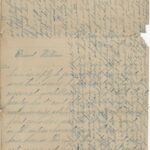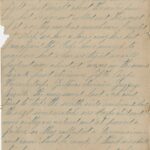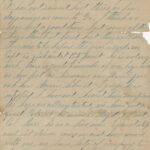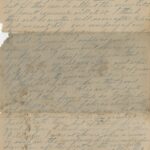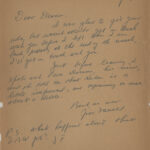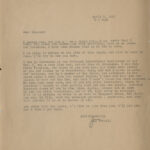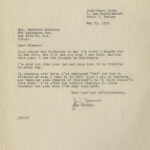Due to Commencement exercises on campus, Special Collections (along with the University Libraries) will be opening LATE on Friday, May, 10, 2018. We will open at 10am and close at our normal time (5pm). We will be CLOSED for a staff event on Monday, May 14, 2018, and we will resume our normal hours on Tuesday, May 15, 2018.
Special Collections will be CLOSED on Monday, May 14, 2018
Just a quick announcement: Special Collections (along with the rest of the University Libraries) will be closed on Monday, May 14, 2018! Special Collections will reopen at our normal time (8am) on Tuesday, May 15, 2018, and we’ll resume our normal hours (M-F from 8am-5pm).
A Poetry Sampling for National Poetry Month
April is National Poetry Month! Since I happen to be a bit of a fan and spent too much of my undergraduate and graduate career reading (and writing about) it, you can’t hold it against me if I go digging into our literature holdings for this blog post. Although we aren’t actively engaged in acquired a lot of literary materials, we do have some great holdings on our shelves. In the past, we received collections of books from English faculty, as well as a few manuscript collections relating to literary figures. We have a first edition of James Joyce’s Ulysses(number 222 of the first 1000), a signed Langston Hughes, a signed F. Scott Fitzgerald, the author’s edition of Walt Whitman’s Leaves of Grass…You get the idea. But we also have our fair share of poetry. All this month on the culinary history blog, I’m writing about poetry relating to food, so I won’t get into that subject here. While there is basically too much for me to choose from, I picked out a few volumes from our shelves that show the variety of poems you might find in Special Collections. Beyond that, I encourage you to check out our catalog or pay us a visit. We’ll be happy to help you find a poem or poet to suit your mood!
We’re starting with some Latin poetry by Catullus. Although this particular book comes from 1820, the poetry is much older. As you can see, each poem is laden with commentary by a 19th century scholar. Catullus wasn’t known for being a very clean or appropriate poet, so through this volume, some previous owner wrote “vile” or “indecent” next to many of the poems. I’m sharing a far less controversial poem–the English translation is posted below.
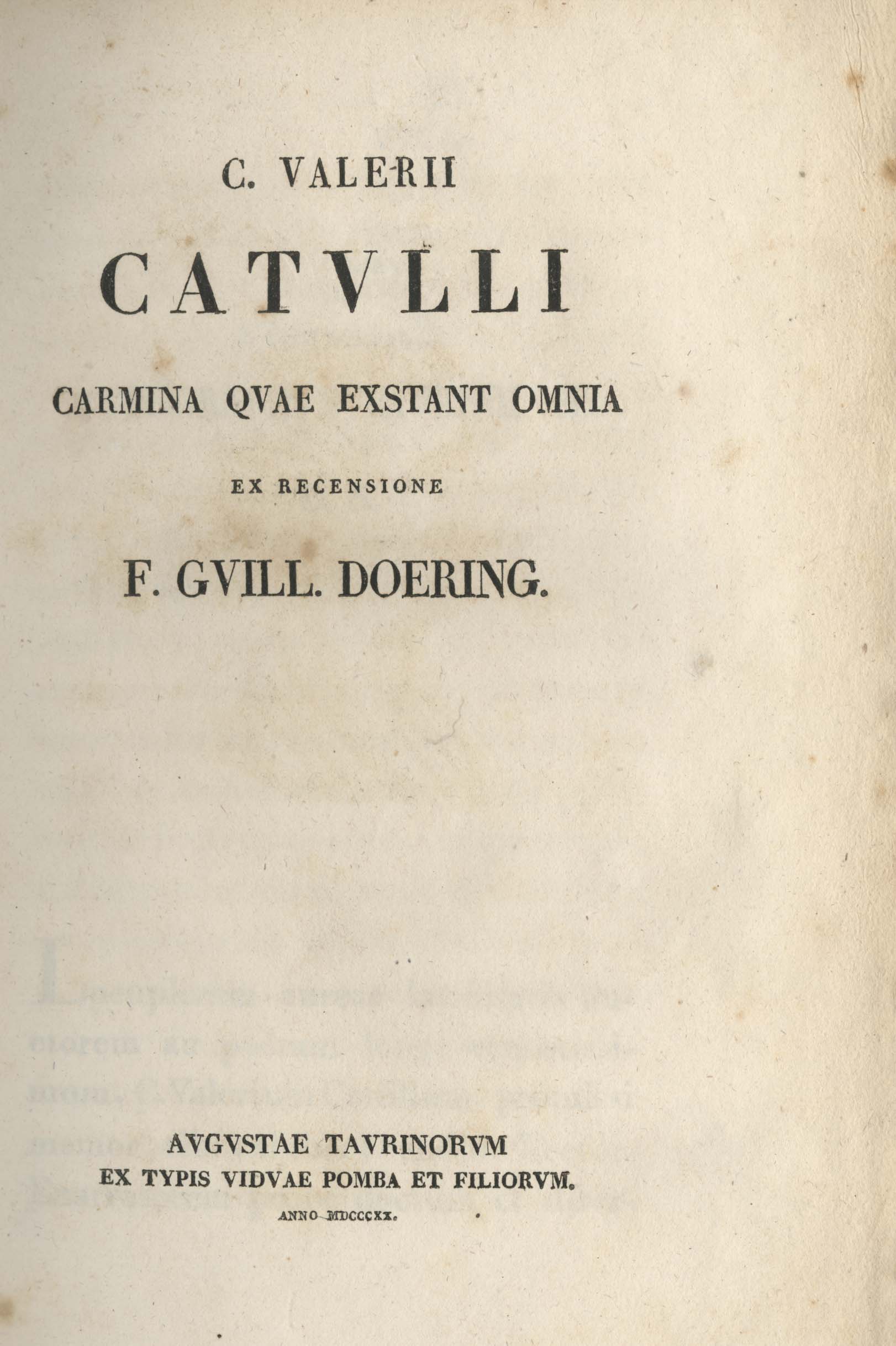
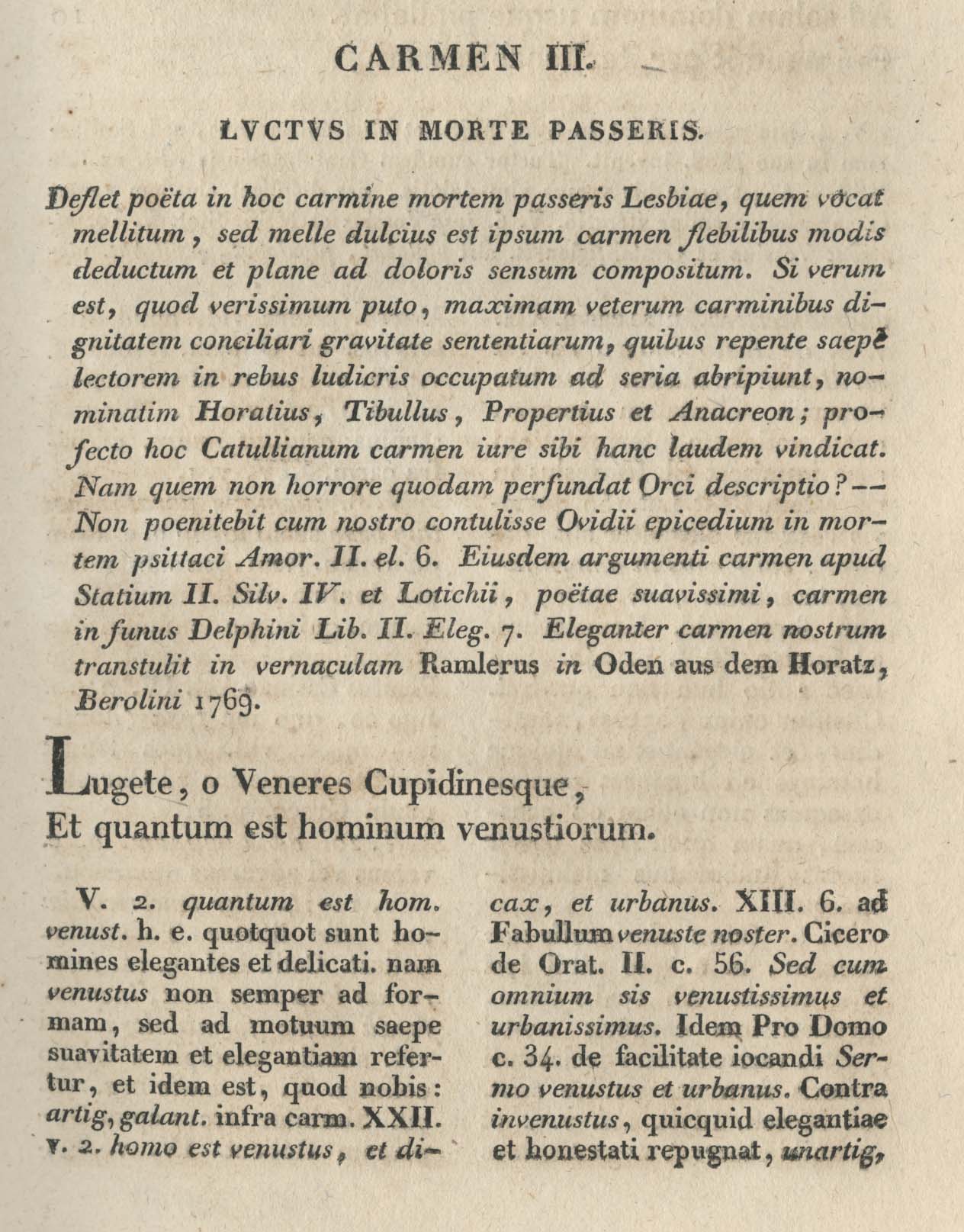
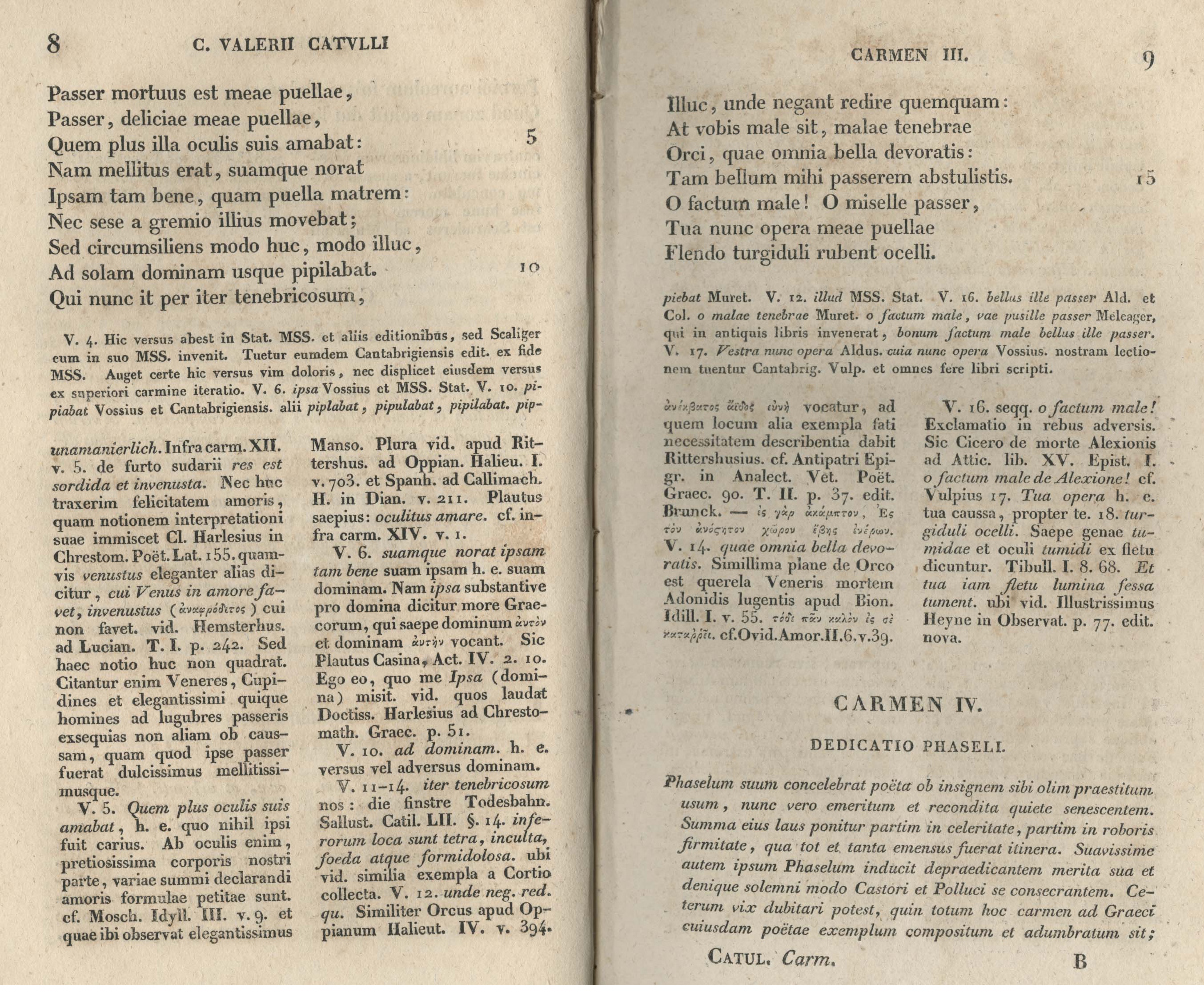 Mourn, O Venuses and Cupids
Mourn, O Venuses and Cupids
and however many there are of more charming people:
my girl’s sparrow is dead
the sparrow, delight of my girl,
whom that girl loved more than her own eyes.
For he was honey-sweet and had known
the lady better than a girl [knows] her mother herself,
nor did he move himself from that girl’s lap,
but hopping around now here now there
he chirped constantly to his mistress alone,
he who now goes through the shadowy journey
thither, whence they deny that anyone returns.
But may it go badly for you, evil shadows
of hell, who devour all beautiful things.
You have taken from me so beautiful a sparrow.
Oh evil deed! Oh wretched little sparrow!
Now through your deeds the eyes of my girl,
swollen with weeping, are red.
Next up, I found a 1909 facsimile volume of the text and manuscript of an 1818 unpublished John Keats poem. The poem is longer than one page, but below are the first pages of the “clean” text, as well as the first page of the actual manuscript. The poem may even be older than 1818, since Keats likely worked on it before he dated it as “finished,” since Fanny was born in 1803 and Keats was eight years older than her.
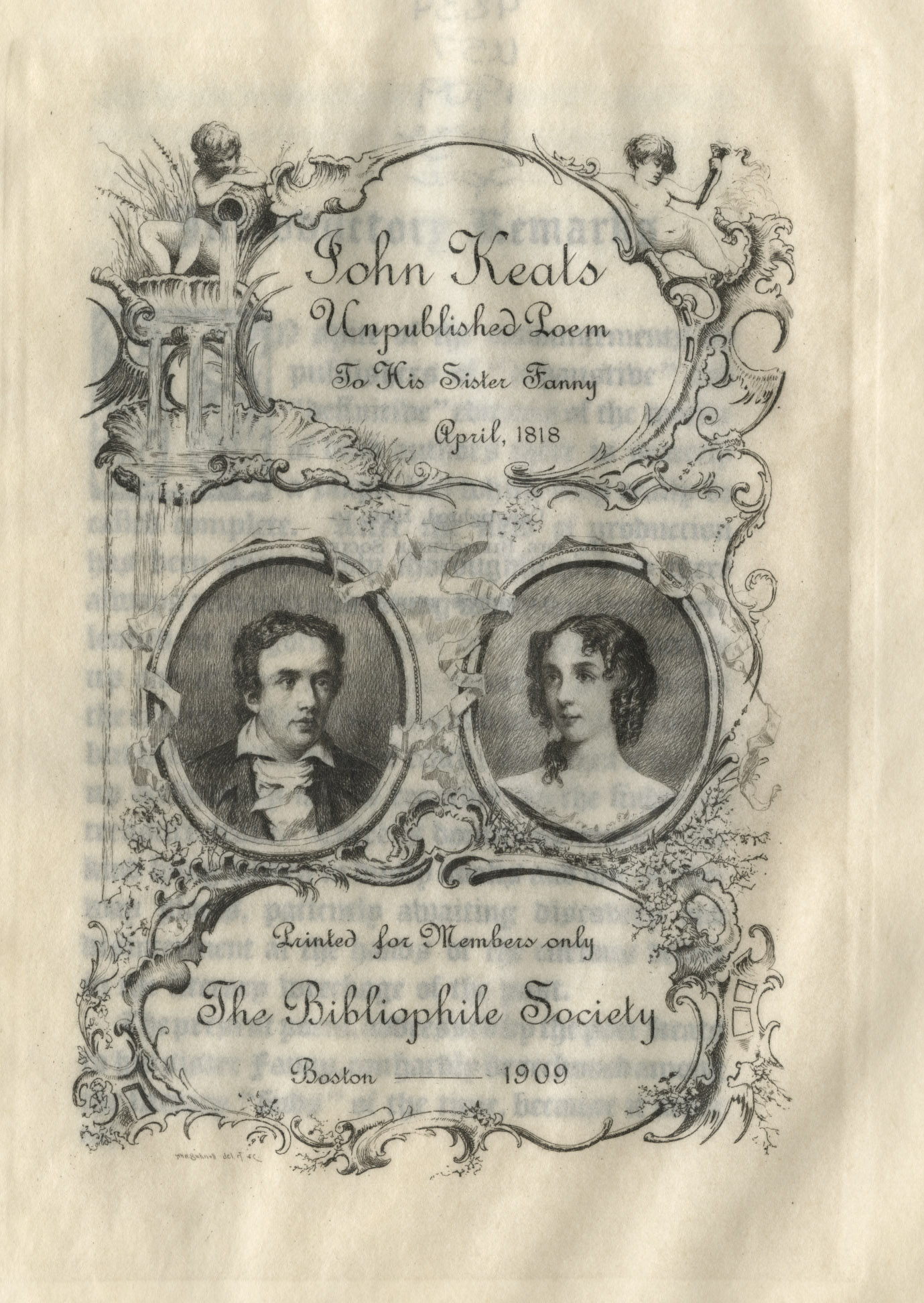
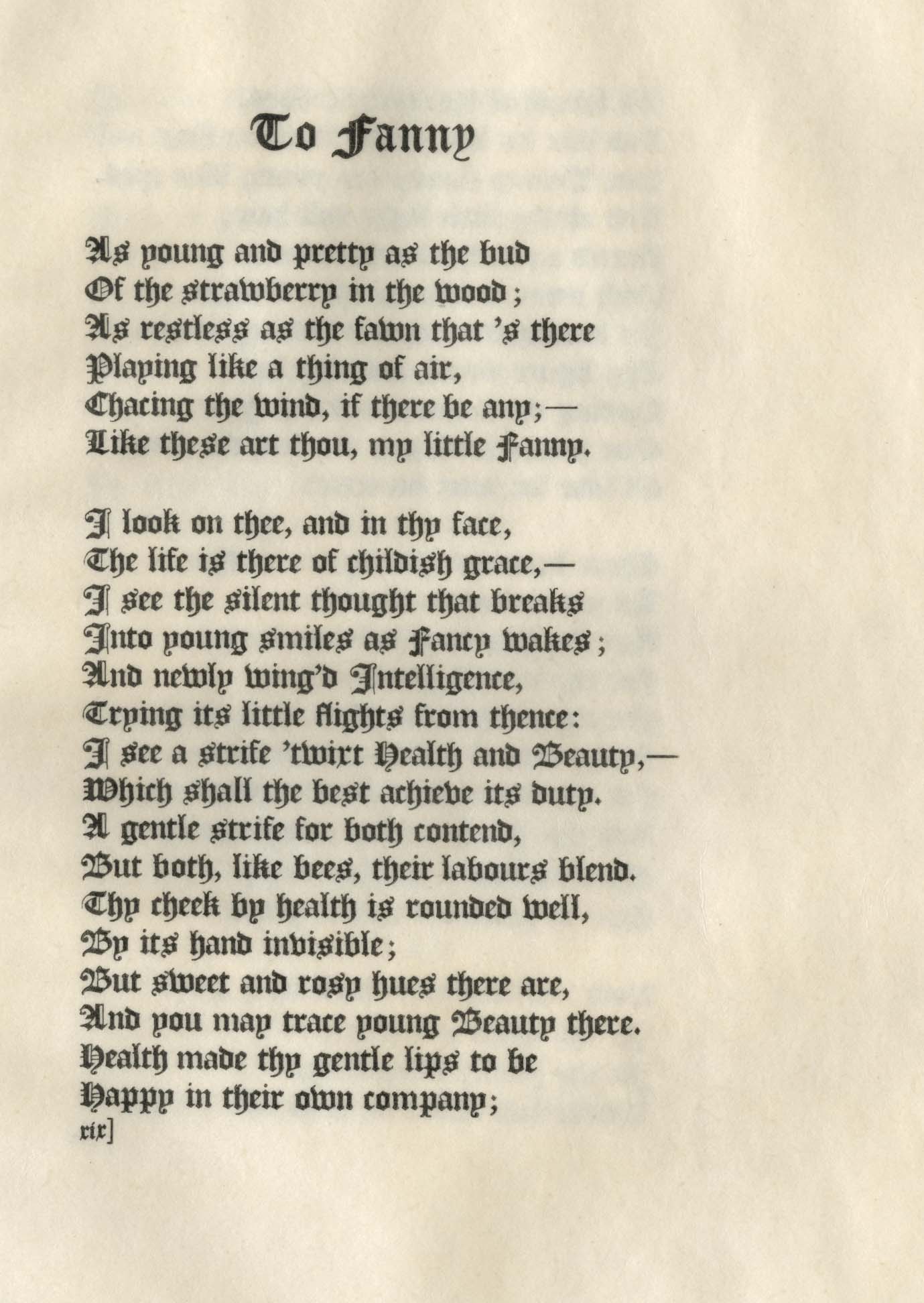
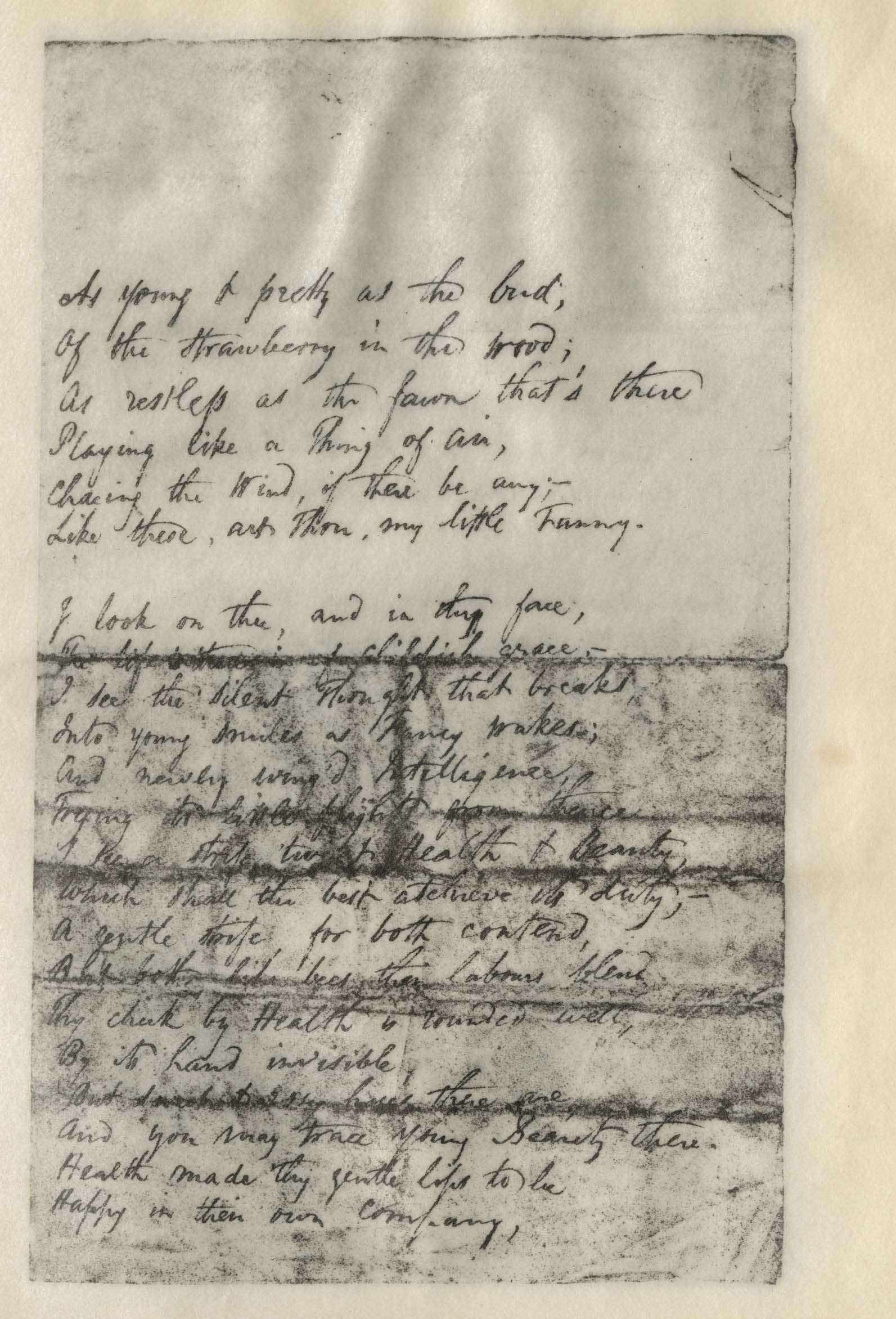
Our rare book collection also contains poetry for children. In 1916, Richard Hale reissued the poems of his great-aunt, Sarah J. Hale, originally written in 1830. She wrote “Mary had a Little Lamb,” as well as other “instructive” poems, often religious in nature, for children. I’ve included the background on this pamphlet, along with the first poem, “Birds.”
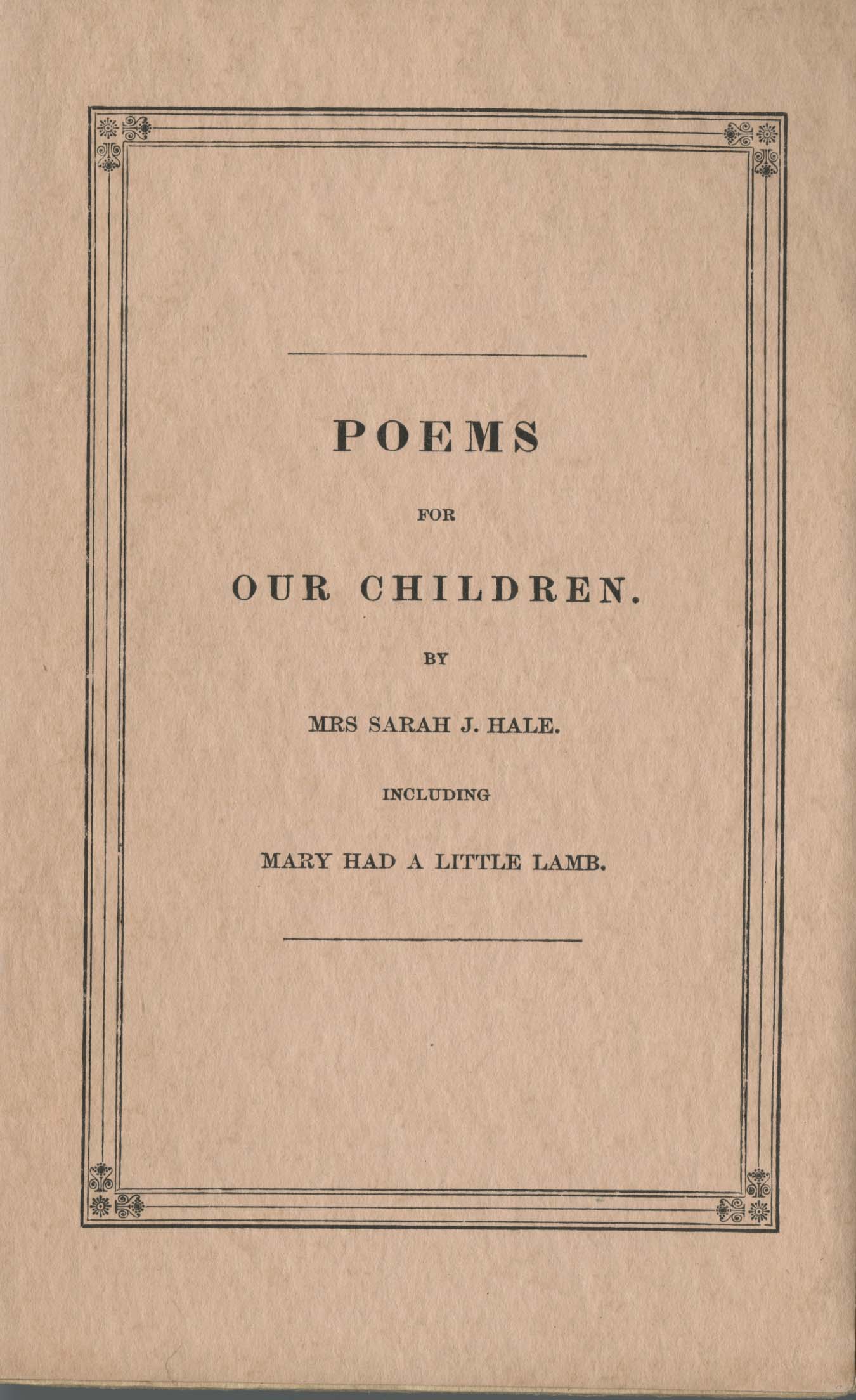
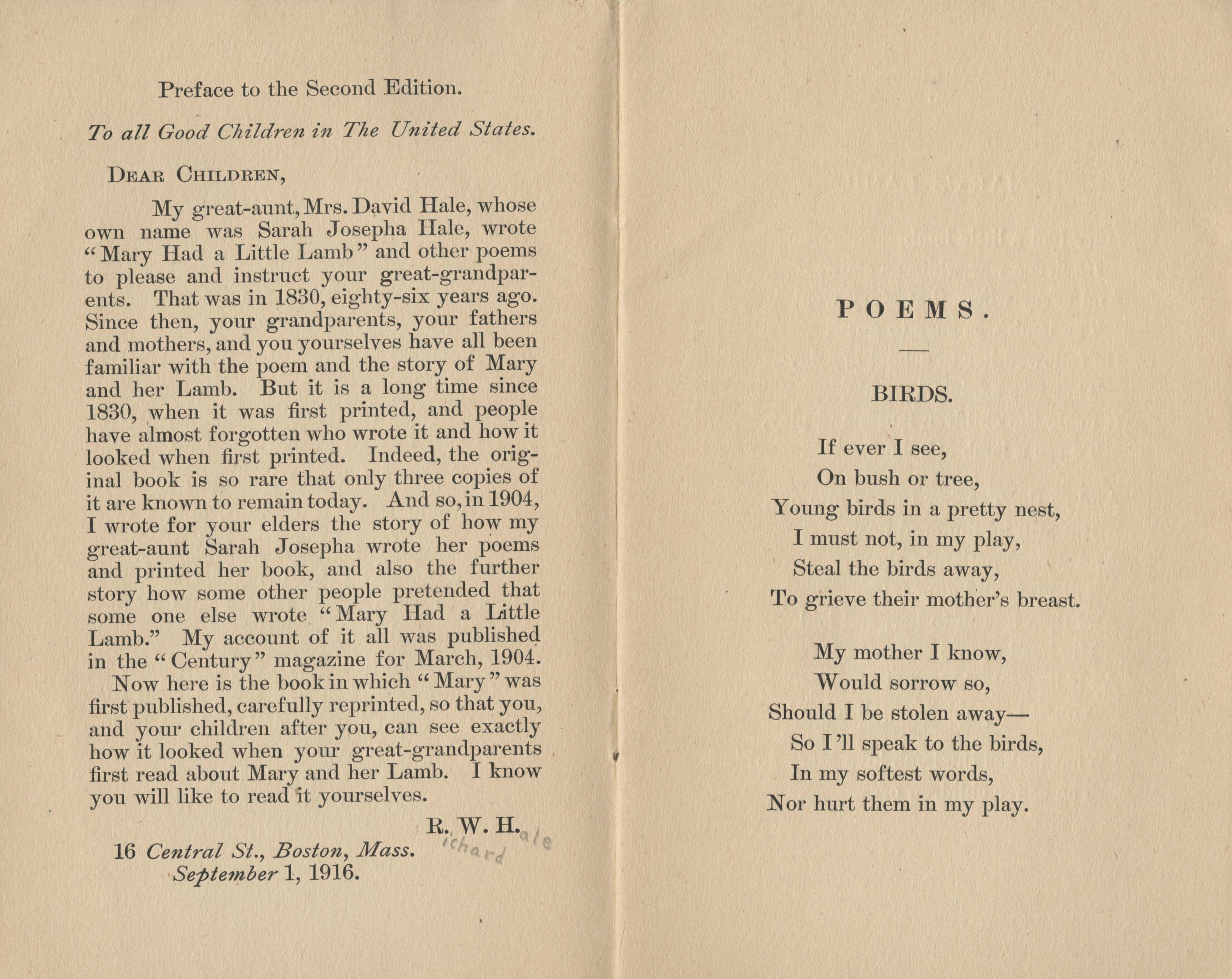
Since one of our major collecting areas is local history, I also found some poetry from a Virginia author. In 1905, Elizabeth May Foster’sPoems was published. This seems to have been her only published work, and it contains largely religious poetry and a few “occasional” poems. As it sounds, “occasional” poems are poems written for a specific event. In this case, it’s for the anniversary of a married couple.
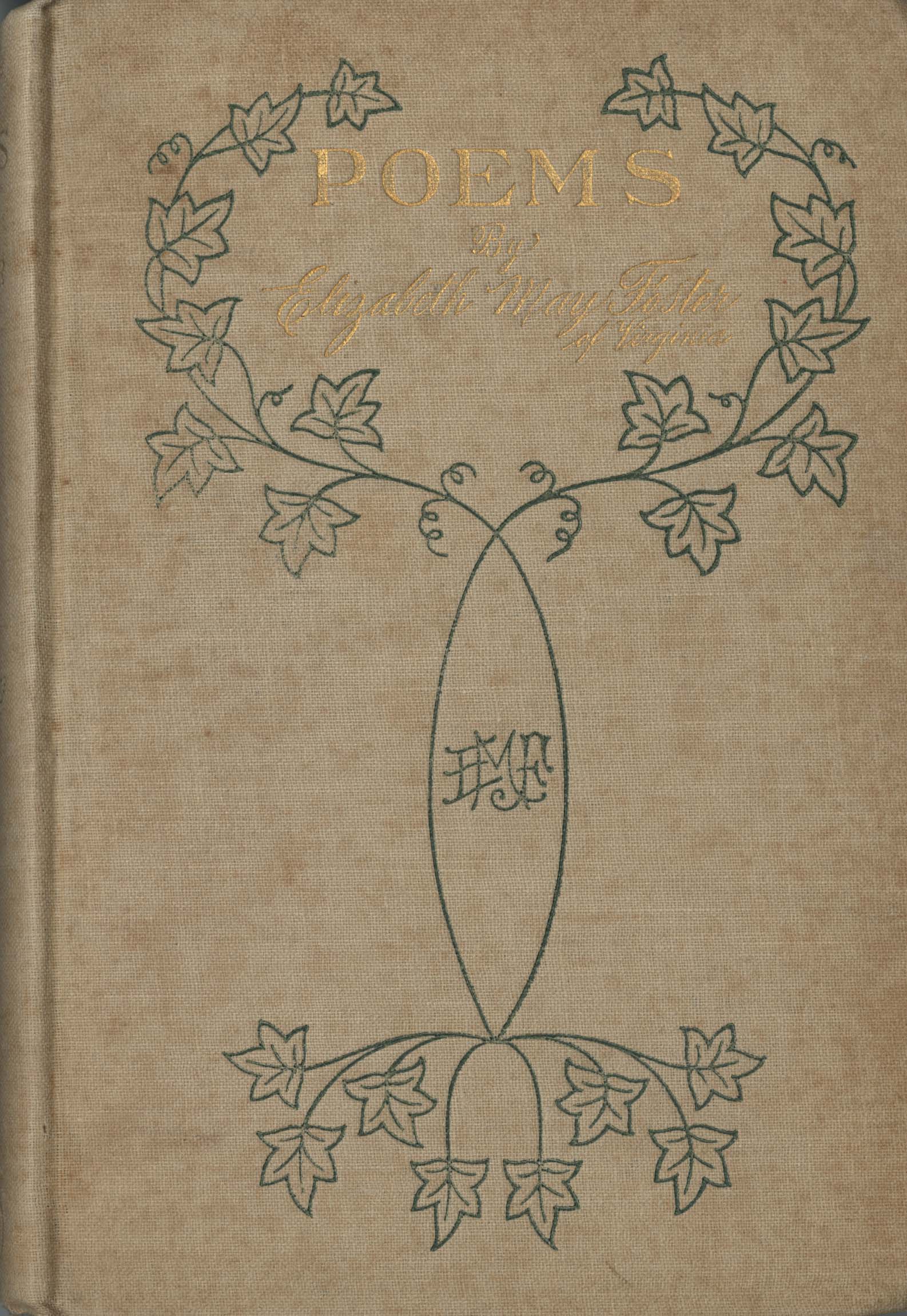
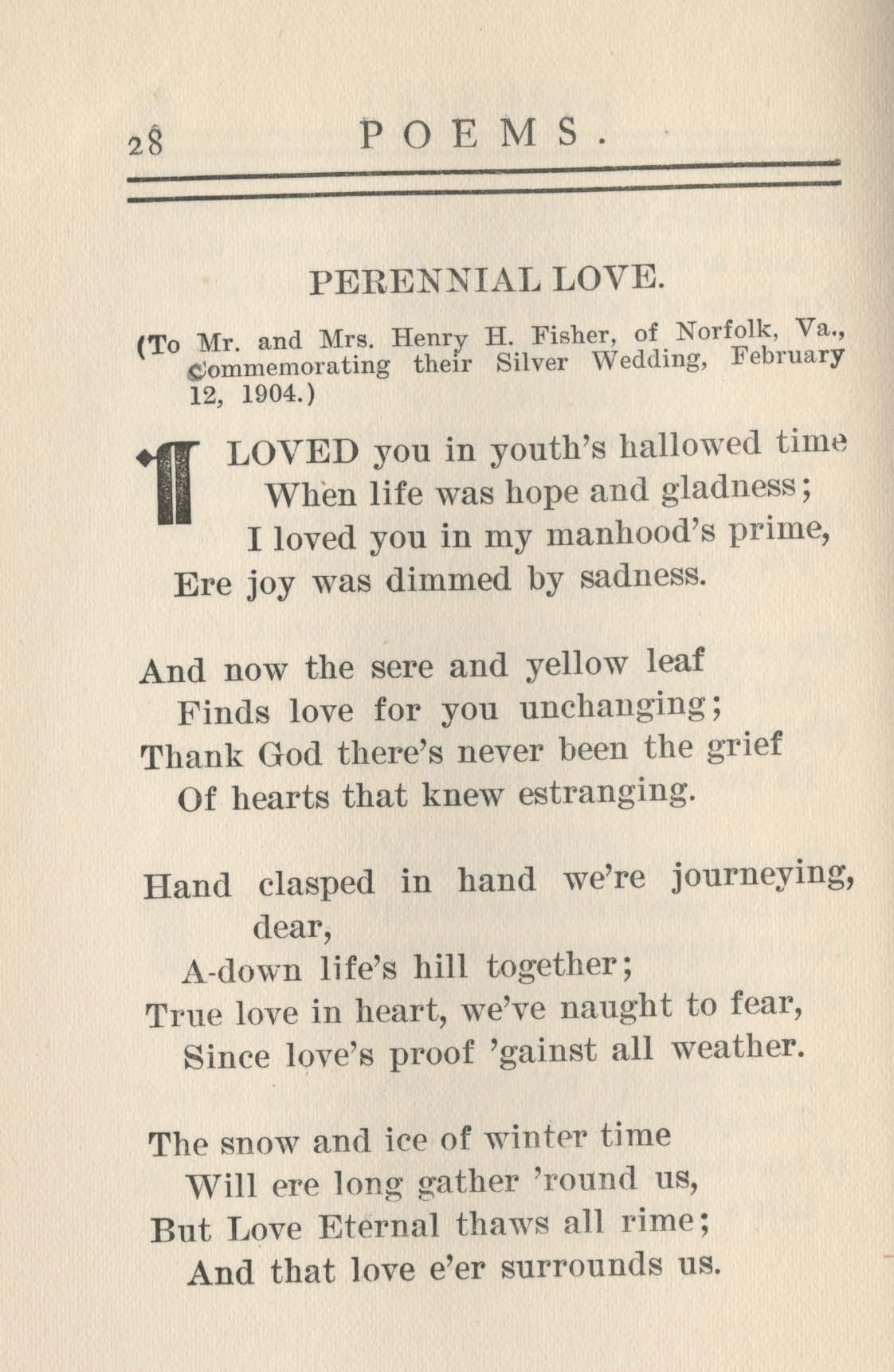
Also building on our “local” theme, we have many, many works by Sherwood Anderson, which I have blogged about before. We have three copies ofMid-American Chants, a collection of poetry published in 1918. Of the three copies, I happened to pull one that still has uncut pages! I choose a poem that fit on a single page, but since its uncut, the poems on the following pages are trickier to read (and would be impossible to scan).
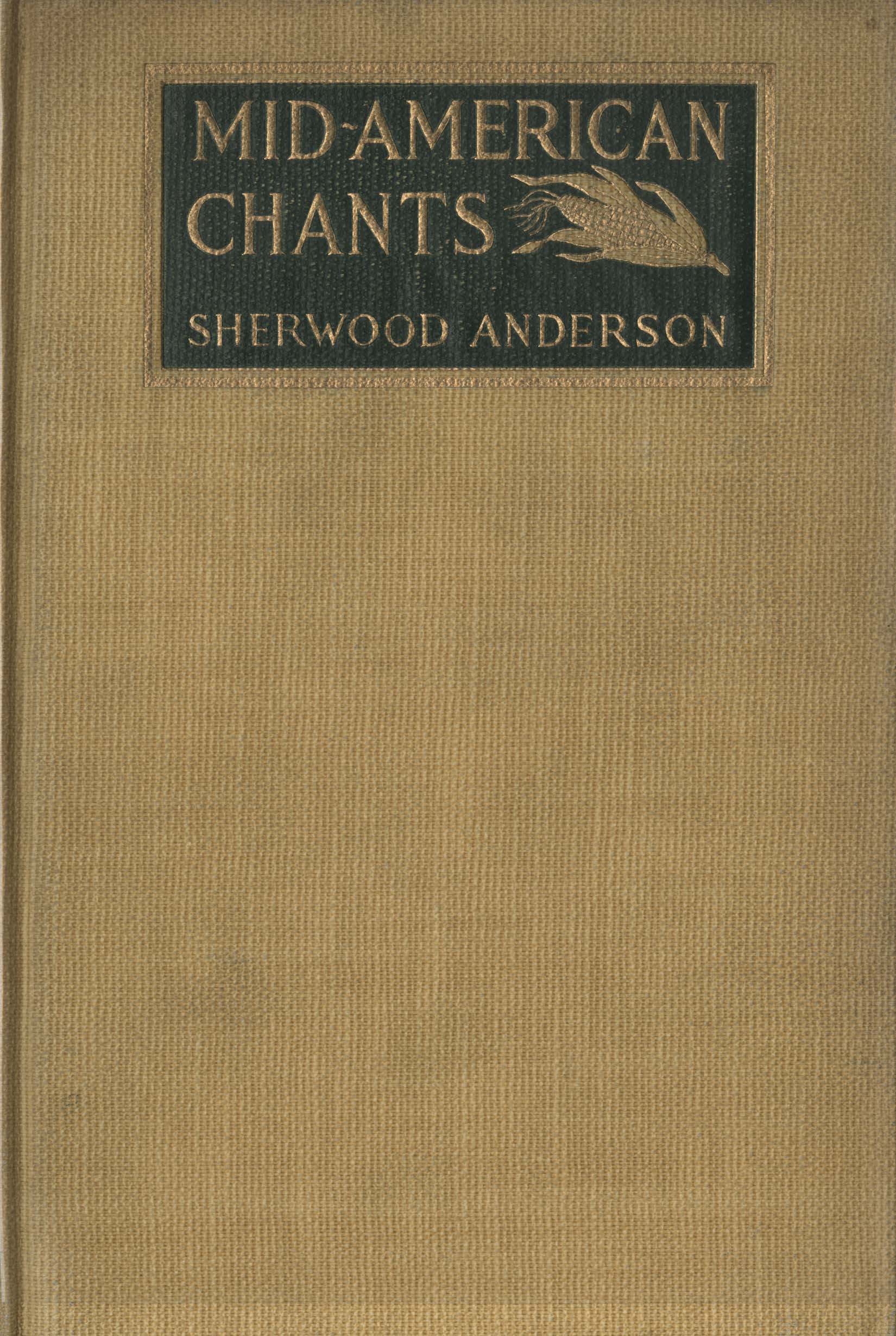
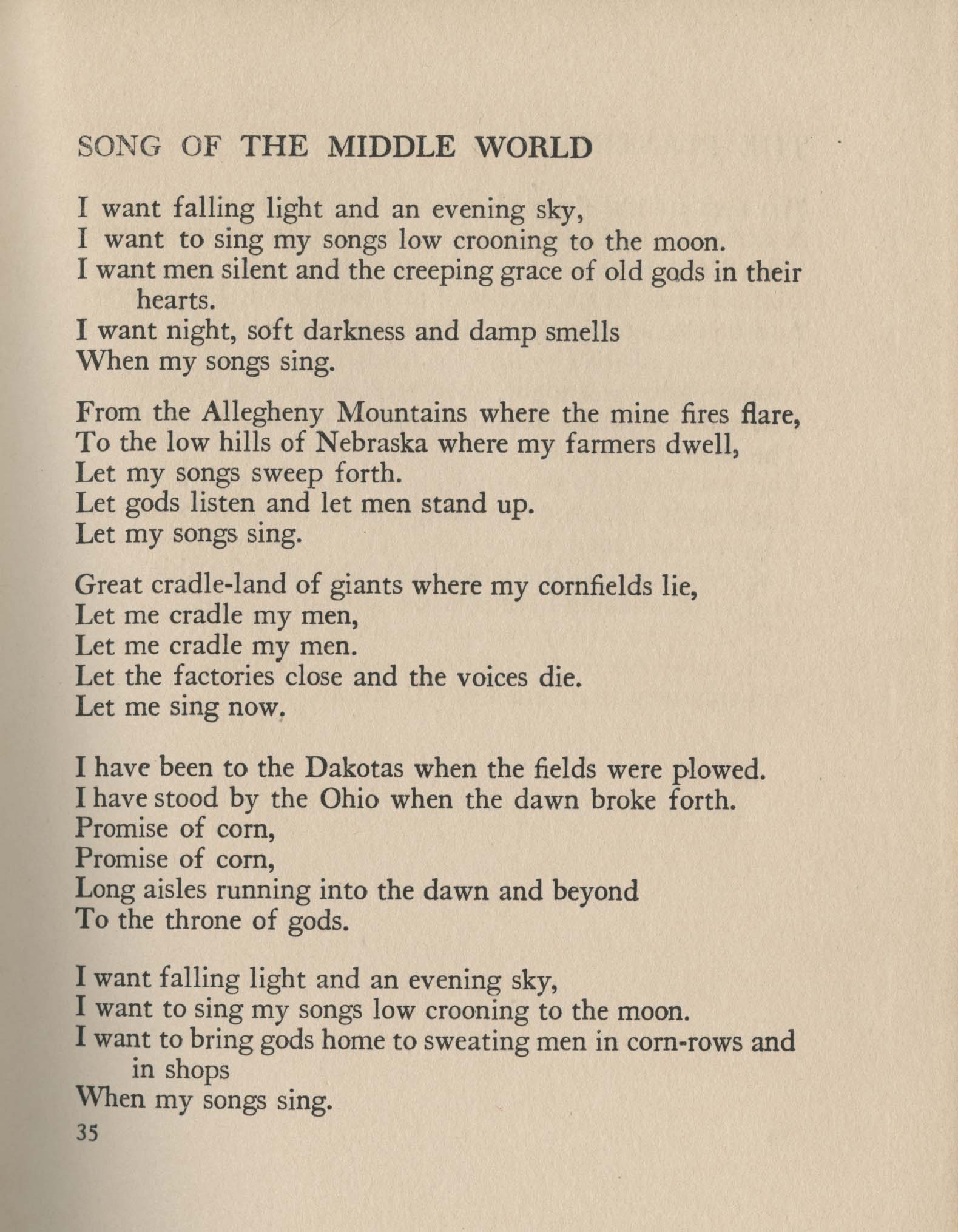
For our last poem (but not our last poet), I found Allen Ginsberg’sThe Gates of Wrath, published in 1972. I chose a very short poem, but I’ve given you a lot to read so far. 🙂
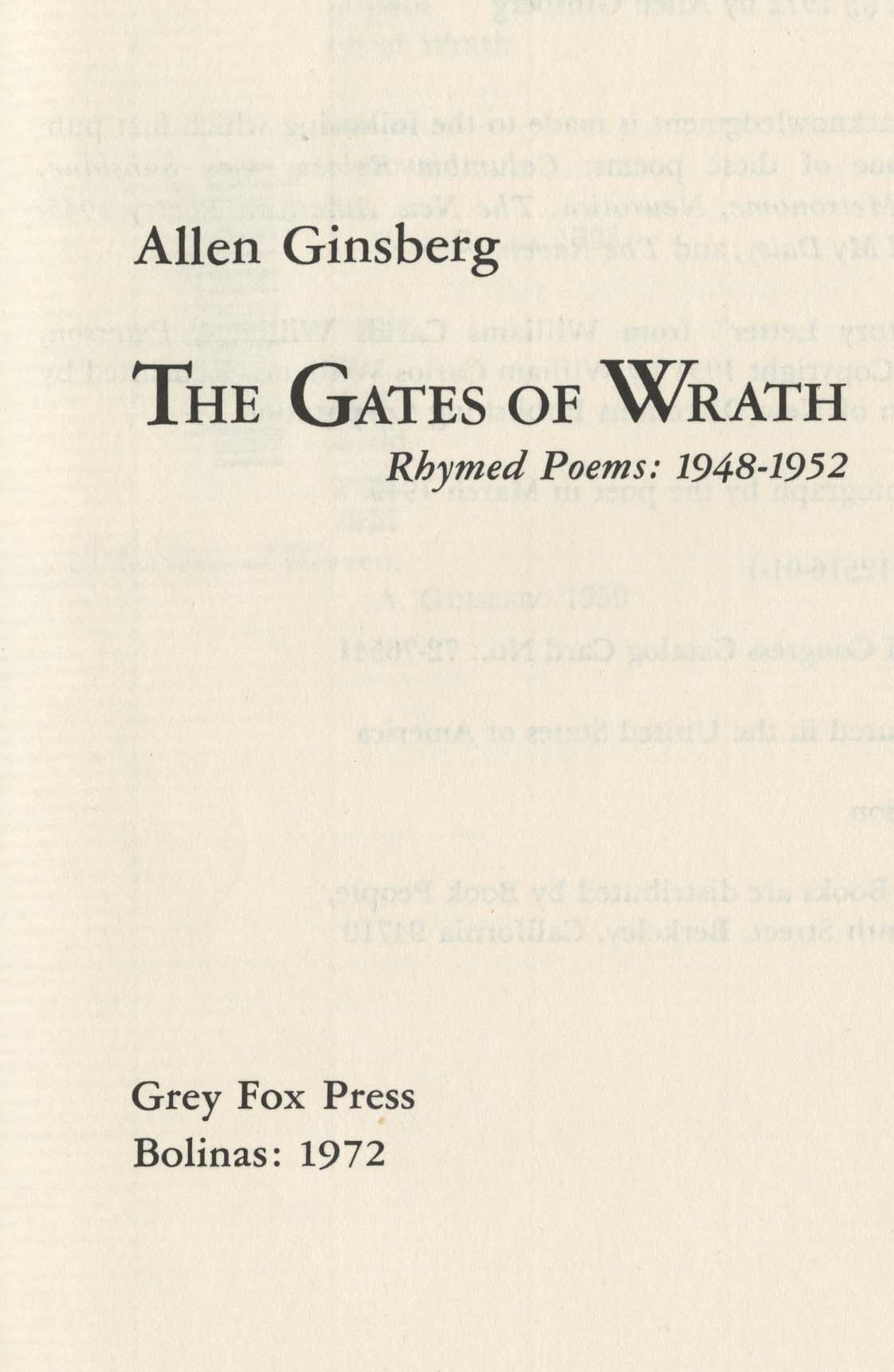
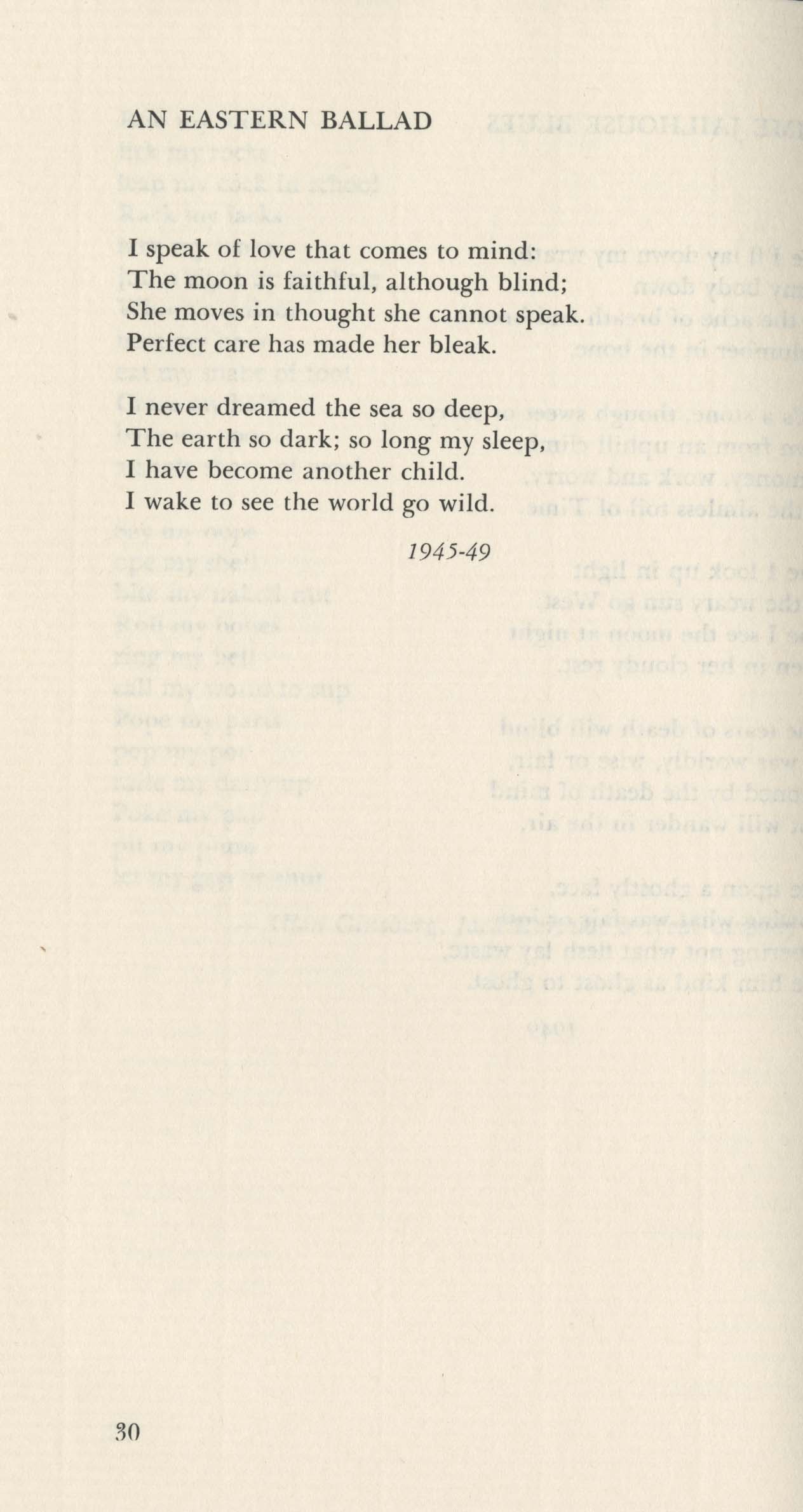
Before we depart from our smattering of poetry (that really is the tip of the iceberg!), I took one more picture for this post. We have many books by Virginia Tech faculty member and author Nikki Giovanni. These are a few of titles on one of our shelves. The gap represents a book that is in our display in the reading room from Women’s History Month, which is coming down today.
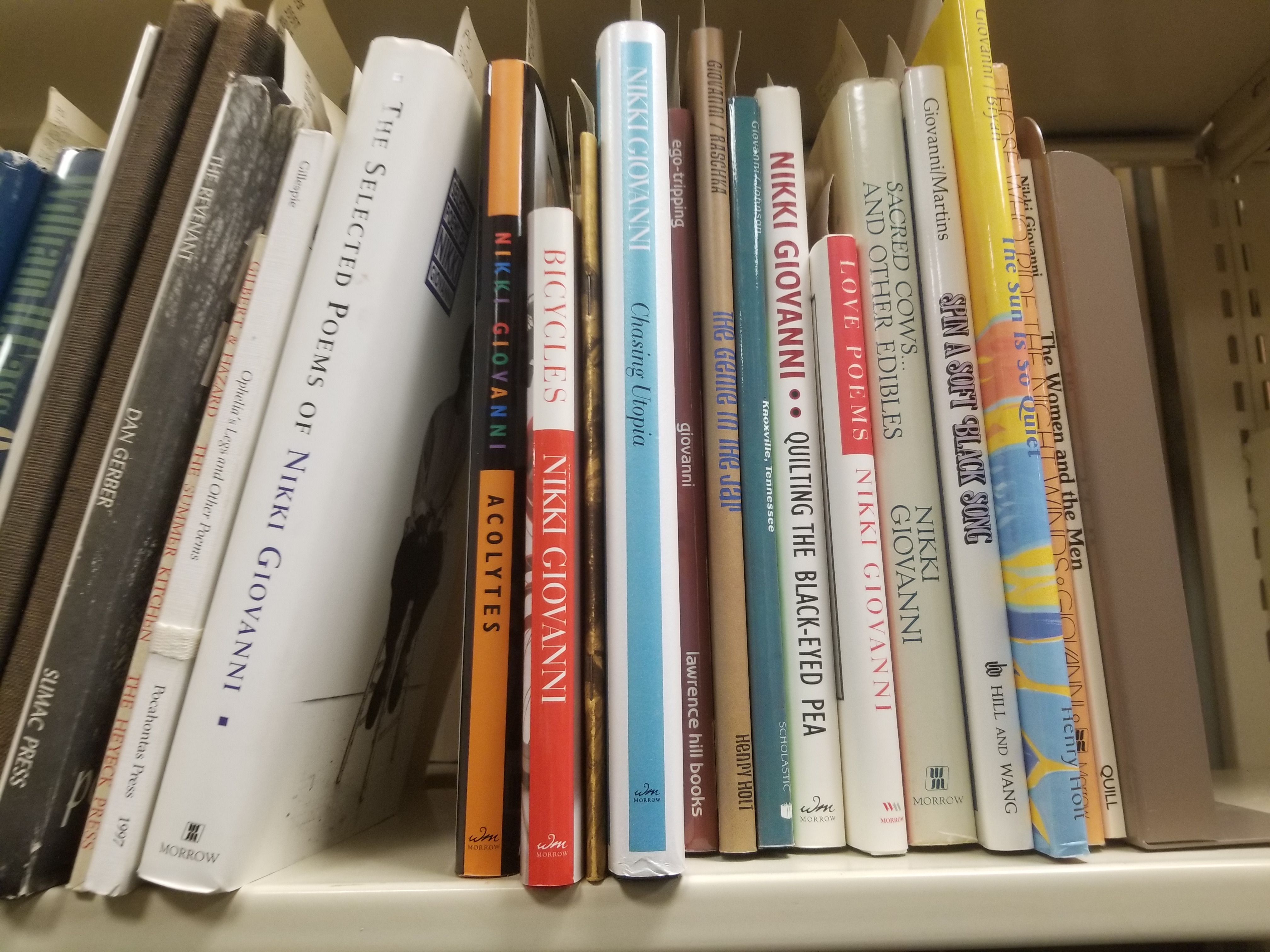
I hope I’ve given you some idea of what we have and perhaps inspired you to read a little poetry for National Poetry Month. There’s so much variety in poetry, even if you don’t think you like it, you might be surprised at what you can find. If you have a favorite poem, share it in the comments–I’d love to know (and am always looking for recommendations)! And you can engage in larger conversations on social media using #nationalpoetrymonth or #napomo!
Women’s History Month 2018
Women’s History Month is only a few days away and again this year, Special Collections and the University Libraries, in conjunction with some friends around campus, have some plans a-foot!
“Coeds: The History of Women Students at Virginia Tech”(sponsored by University Libraries and Virginia Tech Alumni Association).Virginia Tech first admitted women as students in 1921, but it was a long road to acceptance. Women had to create their own yearbook and unofficial sports teams in the beginning, and it took decades to achieve important student leadership positions in student organizations. Additional barriers prevented women students of color from reaching the same status as white women students for years and sometimes decades, as with the first Black women who didnt matriculate until 1966, a full 45 years after the first white women and 13 years after the first Black man. This exhibit highlights the many women who overcame these obstacles in order to obtain a quality education and to open doors for others to join the Hokie Nation.Wednesday, February 14th through Friday, March 30th, Monday-Friday from 8am-5pm at the Alumni Museum in Holtzman Alumni Center.
“Courage, Resistance, and Leadership: Women in American History” (sponsored by Special Collections and University Libraries). Special Collections and Newman Library will be collaborating on two exhibits in two spaces on the first floor of Newman Library. Special Collections will have items from our collections on display in the Reading Room, along with a digital slideshow of additional materials, trivia, and fun facts. In a nearby location on the first floor of the library, there will be a display of posters highlighting women represented in Special Collections holdings, as well as from the Womens History Month website, which contextualize their roles in American history.Open Thursday, March 1 through Monday, April 2, during Newman Library Hours. Posters will be on display on the first floor of Newman Library in the hallway across from classroom 120; the Special Collections reading room is on the first floor near the cafe.
“Together | We: Troubling the Field in 20th Century Architecture” (sponsored by Special Collections and University Libraries). The Special Collections Department at Newman Library will have an interactive digital exhibition on display focused on materials from the International Archive of Women in Architecture (IAWA). The exhibit will highlight a number of women working primarily in the 20th century who were practitioners and often pioneers in the field. In addition to their architectural work they often had to overcome significant barriers to entry into the field, including access to the resources and networks of professional organizations. Several of these women became avid organizers and advocates, highlighting the contributions of other women to the profession and working to rectify the disparities in representation across daily practice and professional associations.Open Thursday, March 1 through Monday, April 2, during Newman Library Hours. Display will be on the first floor of Newman Library in the hallway across from classroom 120.
For the sixth year running, our Whats Cookin @Special Collections?! blog will continue its Womens History Month series, highlighting the contributions of women to the culinary and agricultural fields! (You can view the posts to date online.) New posts should also show up under this category as they are published. So far, we’re planning to look at Martha Lee Anderson (pamphlet author for Church & Dwight, aka Arm & Hammer), the legend of Betty Crocker, and a manuscript cookbook from an alumnae of Randolph Macon College from the 1920s. And you may see some women’s history-themed posts on our “Special Collections at Virginia Tech“ blog, as well as on oursocial media channels (@VT_SCUA on Twitter and through our contributions the University Libraries’ Instagram account, @vtlibraries).
We are also involved in a set of individual events in March:
- “Wikimedia Share-A-Thon” (sponsored by University Libraries and the Womens Center).Come help enhance the visual record ahead of the next two events in this Wikipedia intervention series (see below). The workshop will start with an introduction to Wikimedia Commons and then dive into sharing photos on the platform. As Wikimedia Commons only accepts freely licensed images, there will also be an overview of Creative Commons Licensing.Tuesday, March 20 from 2-3:30pm in the Newman Library Multipurpose Room.
- “FlowGround Session Wikipedia Editing Workshop” (sponsored by University Libraries and the Womens Center).Drop in for an informal session to chat with colleagues about intersections between fields that could generate a push to make Wikipedia articles a more complexyet still accessibleresource for the general public. Set up an account, learn about editing, talk with people from a wide range of disciplines about intervening in social spaces, and just generally share ideas that transcend specific disciplines, technology, tools, and processes. Wednesday, March 21st from 11:30am-1pm in the Newman Library Athenaeum (room 124).
- “Wikipedia Edit-A-Thon” (sponsored by University Libraries and the Womens Center). Drop in any time to help edit Wikipediaor just learn about the process and purpose. Tutorial sessions, online modules, assistance in setting up accounts, and other resources will be provided throughout the day for new editors or anyone who wants a refresher. Share ideas, update articles in your area of interest, work with others to enhance existing materials, and enjoy the experience of coming together to make a difference. Wednesday, March 28 from 11am-8pmin the Newman Library Multipurpose Room.
- “2018 International Archive of Women in Architecture Symposium” (sponsored by College of Architecture and Urban Studies Diversity Committee and the International Archive of Women in Architecture (IAWA)). For centuries, women in architecture have been involved in pushing the boundaries of architecture and architectural practice. Whether as registered architects, members and leaders of architectural firms, academics and scholars, or in any of the less conventional capacities, women have helped transform the discipline of architecture and the related design fields shaping the built environment.Wednesday, March 28th: 7pm; Thursday, March 29th and Friday, March 30th: 9:30am-4:30pm
There will be about 45 events going on during March all over campus to celebrate women’s history month and we encourage you to check out the calendar (which will be posted online this week) and get involved where you can!
Ansil T. Bartlett & A Bird
In April 1865, a young man named Ansil T. Bartlett was in Farmville, Virginia (or, as he put it, Farmsville). From what we know, Bartlett enlisted withCompany D of the 58th Regiment, Massachusetts Infantry in early 1864. Although he spent less than 18 months in service during the war, his regiment was involved in action at Spottsylvania, Cold Harbor, and the fall of Petersburg, among other places. On April 15, 1865, he wrote a letter home to his father.
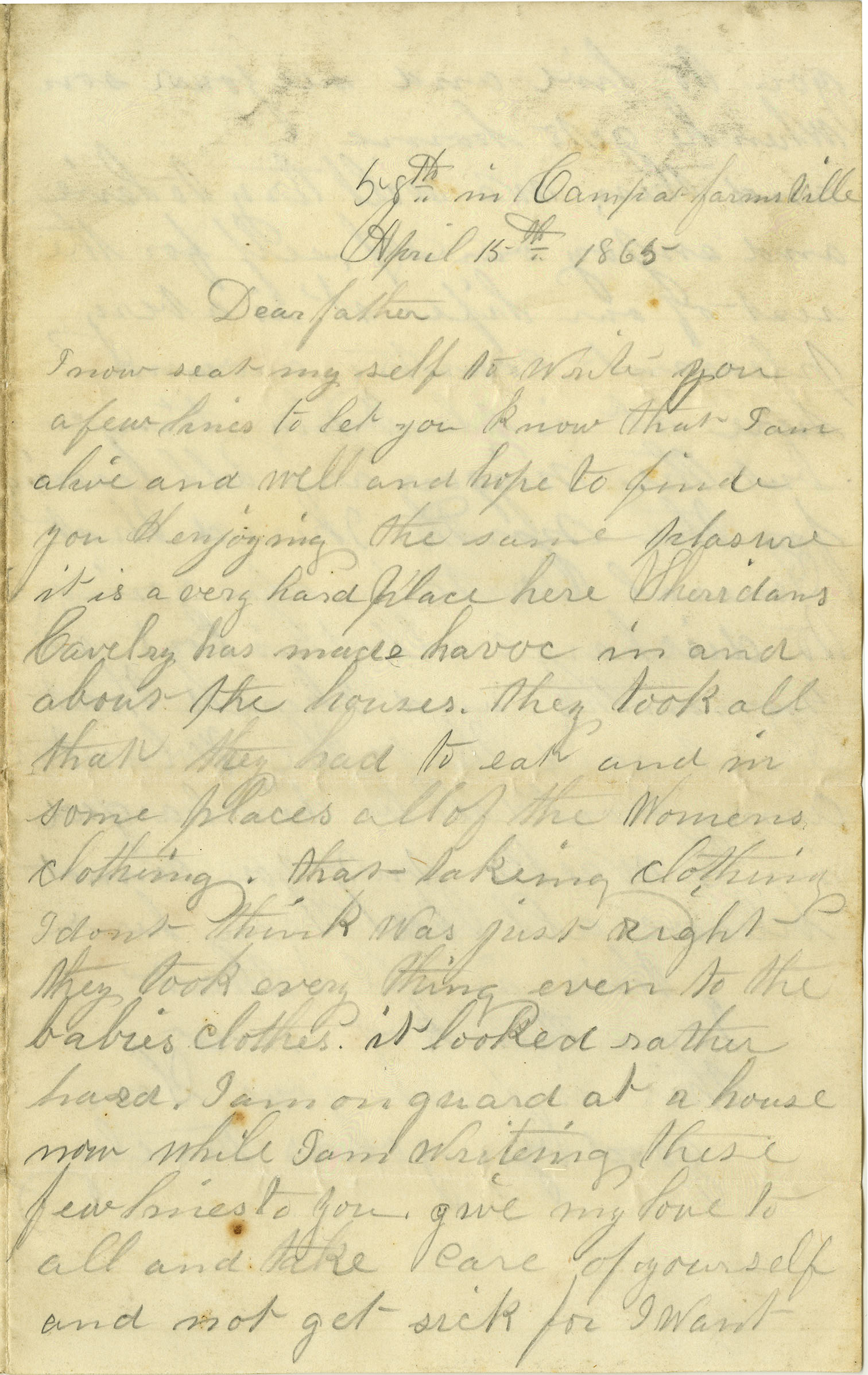
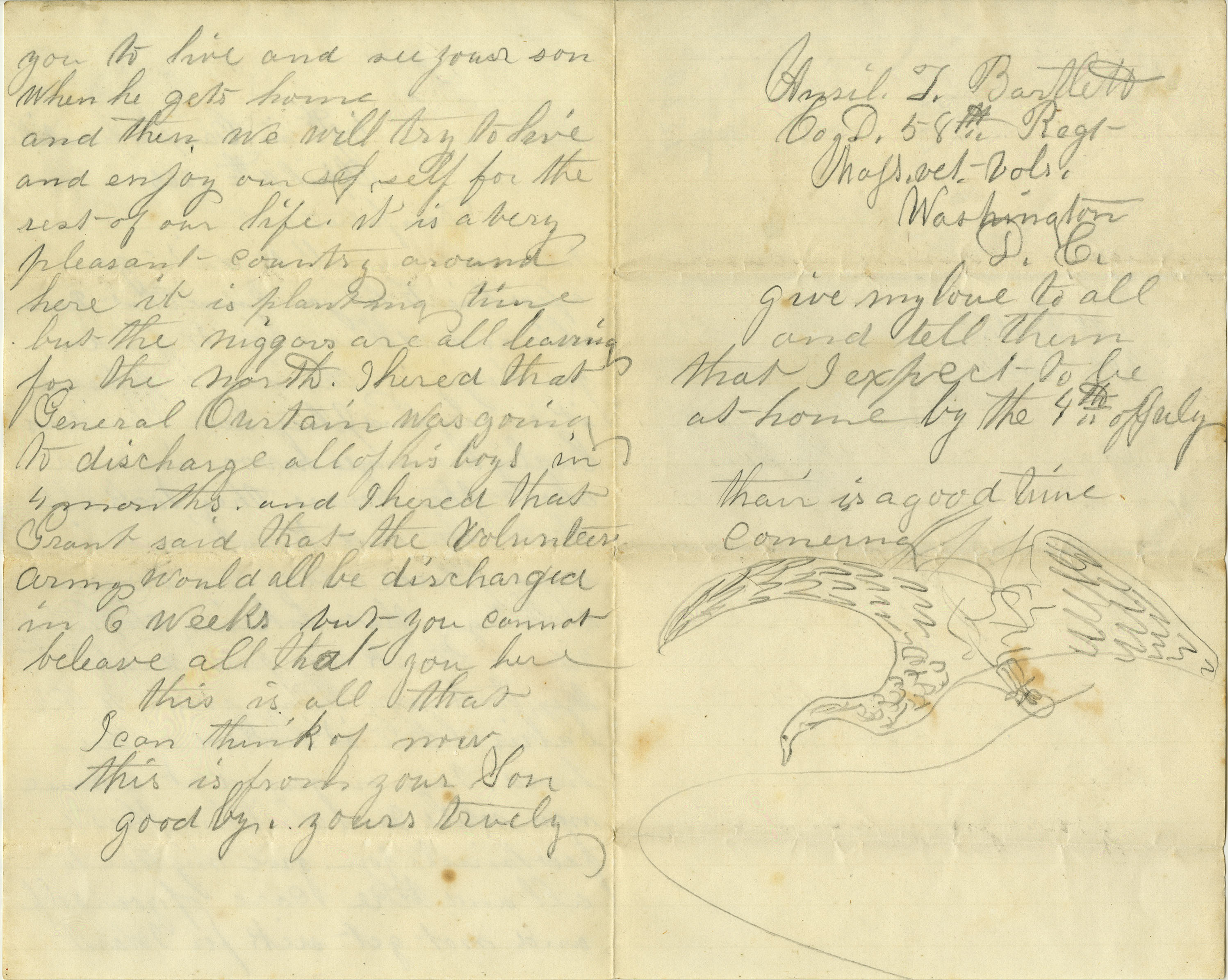
58thin camp at Farmsville
April 15th 1865
Dear Father
I now seat myself to write you a few lines top let you know that I am alive and well and hope to find you enjoying the same pleasure it is a very hard place here. Sheridan’s Cavalry has made havoc in and about the houses. they took all that they had to eat and in some places all of the women’s clothing. that taking clothing I don’t think was just right they took everything even to the babies clothes. it looked rather hard. I am on guard at a house now while I am writing these few lines to you. give my love to all and take care of yourself and not get sick for I wantyou to live and see your son when he gets home and then we will try to live and enjoy our self for the rest of our life. it is a very pleasant country around here it is planting time but the niggers are all leaving for the north. I heard that General Curtain was giving no discharge all of his boys in 4 months. and I heard that Grant said that the volunteers army would all be discharged in 6 weeks but you cannot believe all that you hear this is all that I can think of now this is from your son good bye yours trulyAnsil T Bartlett
Co D 58thRegt Mass. Vet. Vols
Washington
DC
give my love to all and tell them that I expect to be at home by the 4thof July there is a good time coming
Written only days after Lee’s surrender, Bartlett cautions his father against believing any rumors about when he might be discharged, though his own post script suggests he thought 2 months wasn’t unreasonable. His letter is not uncommon in many senses: he reports on his current activities, recounts what he has witnessed around him recently, and looks forward to a life after the war. (Bartlett was actually discharged in late July of 1865.)
What really struck me about this letter the first time I saw it, though, was what came at the end–Bartlett’s drawing of a bird. 152 years later, we don’t have any clue as to why he drew it or what it symbolized to him. He doesn’t comment on it and it looks almost like an afterthought, tacked on to the close of his letter. But, it’s also write on the heels of his final reminder: “there is a good time coming.” Perhaps it was a reminder of that, and an image that represents a good future. Perhaps is meant to be an eagle, a bird used by many regiments on their flags and, at the time, at least part of the country. Perhaps it meant something specific to his father. Or maybe it’s just something he drew to fill the space at the close of his note. Whatever the case, it certainly makes Bartlett’s letter something unique.
The finding aid for this collection is available online. In addition, it has been digitized. You can see these two pages, as well as the third (which includes an addresses and some calculations) online.
Quick Announcement Re: November 17, 2017
Just a quick announcement from our staff: Newman Library will be closing early at 4pm on Friday, November 17, 2017, for a donor appreciation event. This includes Special Collections. We will open at 8am, as usual, but we be closing an hour early. We will re-open at our usual time on the following Monday morning (November 20, 2017).
To “Friend William:” A Letter from Weldon Railroad, VA, 1864
We talk a lot about items and collections in Special Collections having stories to tell. Sometimes, those stories are full of clear details, exciting new surprises, and a creator about whom we can discover quite a bit. Other times, well, you might get a more interesting mix. The kind that results in some on-going, Scooby-Doo-style sleuthing. Like this letter!
This is a relatively new accession and it isn’t even processed yet (consider this a sneak-peek!). But, it caught my attention as I was thinking back through some recent acquisitions in search of a subject, probably because it has some mystery elements to it. Written November 6, 1864 from Weldon Railroad (just south of Petersburg), Virginia, it’s simply addressed to “Friend William.” We don’t have the original envelope, so we don’t know William’s last name or where he lived at the time. However, based on the contents of the letter, we might guess that William is from Brookfield, NY. One of the other reasons this letter jumped out at me was the first page:
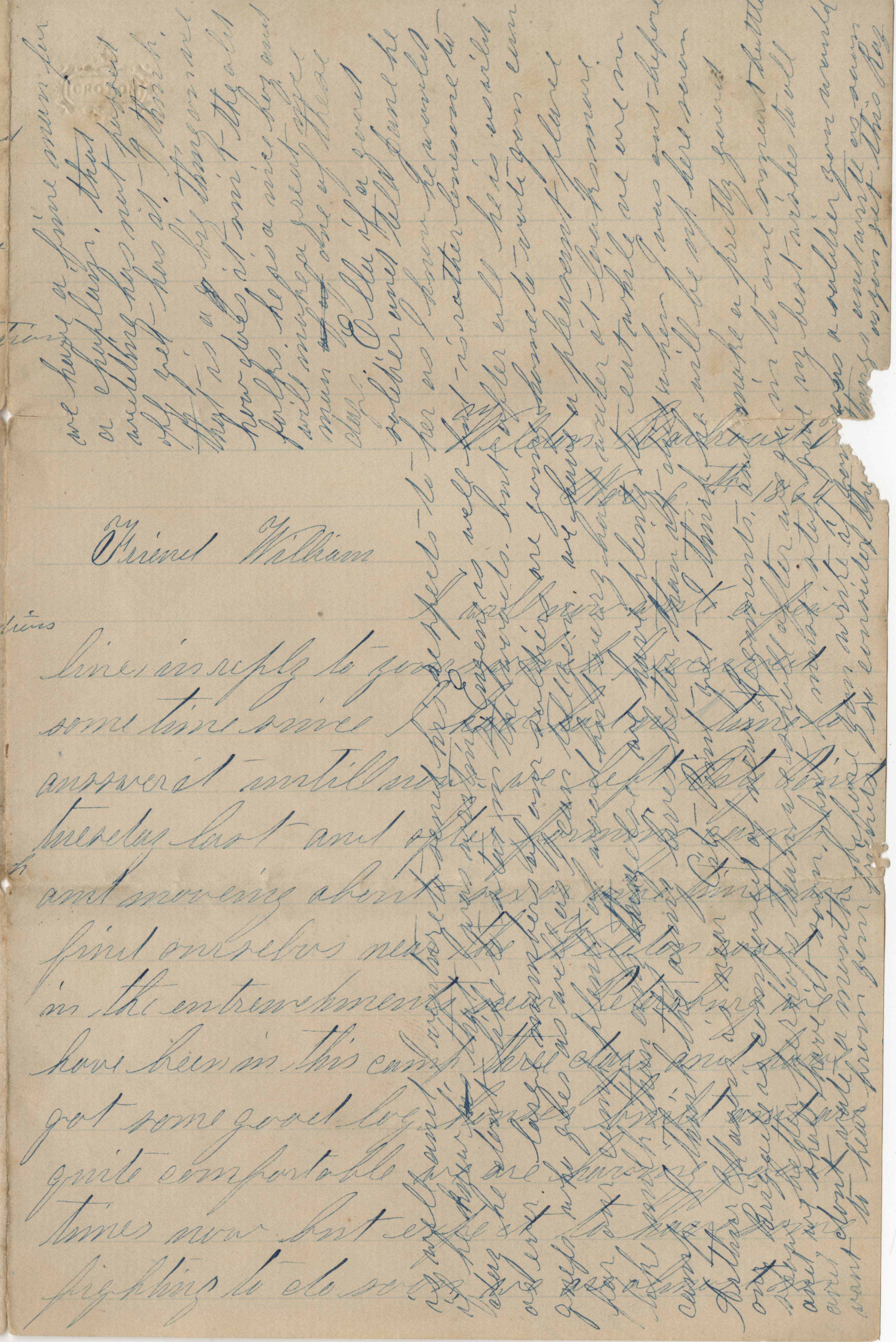
The writer started his letter, finished four pages, and still had more to say. In a time when paper was often scarce (and in other times and places when letters were paid for by the recipient and cost by the page), “cross-hatching” was a common occurrence. Not done writing? Go back to the first page, turn it 90 degrees, and keep going! (That should be totally easy to read, right??) Case in point, this letter actually isn’t as bad as some others. I’ve seen examples done in different colors or in pencil or ink that has faded over time. I was actually able to transcribe the majority of the text (and I’ll be going back to work on those and other missing words down the road). Weldon Railroad was located just south of Petersburg, which was a hotbed of activity during the last 6 months of the Civil War. The 189th Regiment, New York Infantry, the regiment with which the writer served, was newly formed in October 1864, and soldiers in it would spend the majority their service around Petersburg:
we left City Point
tuesday last and after forming corps
and moveing new the Weldon road
in the entrenchments near Petersburg we
have been in this camp three days and have
got some good log houses built and are
quite comfortable we are having good
times now but expect to have some
fighting to do soon
By now, you may have noticed that I keep saying “the writer.” And with good reason. At the very end of the cross-hatching, in the upper-right corner of the first/last page, the letter simply reads “write as soon as you get this Raz.” Raz. That’s what we have to go on for the author. However, most archivists love a challenge, myself included. While identifying the writer is an on-going challenge, a cursory glance at a roster of the 189th New York Infantry actually gives us a couple of prospective Raz-es: Riley (Rila) Razey and Warren Razey. Raz seems a likely nickname among friends, though there’s still plenty of research to be done.
Here are scans of all the pages:
For a letter that, on the surface, looked like it would be hard to read and lacking in solid information due to its mysterious correspondents, Raz has proved me wrong. His 4+ pages cover a bit of the usual: the weather here is pleasant, you should write more, today is dull, here’s how all our mutual friends in my unit are doing. But he also has some interesting details and insights. On the second page, he writes:
the army moved last week and
tried to take the south side railroad but
through some mistake one Corps did not
move as thay were ordered and it proved a
failure. so thay called it a Reconnaisence
and came back to camp. I think we shall
try it again soon.
Railroads were always coveted property during the war, but soldiers don’t always write so frankly about mishaps. Given that this is a more recently formed regiment, it’s mix of new soldiers and those who have been fighting for a while. Raz notes:”I think we have had a good time but some of the boys think it hard. but thay will see their mistake before the year is up.” Shortly after that, he adds:
I suppose
thay are having great times about Electhion
ant thay. well we have something else to think
of down here it dont interest one much
it will make but little difference who is
president the ware will go on no mater who
is president
One wonders if Raz would have a different view of the war in one, three, or six months’ time. Perhaps if we can figure out who he is, we can figure out some of his post-war life, too. When we process the collection, we’ll try to post an update with new information! In the meantime, you’re welcome to view the letter in person or look at the images online and challenge yourself to read more of Raz’s handwriting.
Dear Eleanor…Affectionately, James
I feel like, at some point, I should stop posting about Sherwood Anderson and his extended circle (this makes #3 for me and #4 total in the 18 months or so). On the other hand, over the last two years, we’ve been able to acquire some great new materials. This week, I’ve got a short set of letters from James T. Farrell to Eleanor Copenhaver Anderson.
This collection contains four letters written by author James Farrell to Eleanor Copenhaver Anderson between February 1952 and May of 1954. The two had some on-going correspondence of which this represents only a small piece. As the letters suggest, one thing the two had in common was social activism–at various points in time, both worked for and supported various rights and activist causes. The April 8th letter is primarily concerned with Farrell’s updates about contacts in the UAW and his efforts to help Anderson get a job with them, if she was interested. (It appears she was not, as she was re-hired by her previous employer, the YWCA, in 1951, and she remained with the organization until 1961.) The third and fourth letters are about some of Farrell’s recent writings on Sherwood Anderson, Anderson’s influence on Farrell, and Farrell’s own writing efforts at the time.
The finding aid for the collection has biographical notes on Farrell and Anderson and you can view it here:http://ead.lib.virginia.edu/vivaxtf/view?docId=vt/viblbv01848.xml. (The nice thing about revisiting it is discovering one’s typos and fixing them!) I hope to have the letters posted on our digital site soon, at which point I’ll include links to those in the finding aid, too. While the collection is a small one, for Special Collections, it’s yet another piece of the Sherwood Anderson history we have here. It tells a little part of his posthumous story, showing how much of an influence and subject he proved to be consistently in the 10+ years following his death. Equally important, it gives us more insight into Eleanor’s continued connections with the literary circle and her own passion for social activism.
Where the Rubber (Historical Collection) Meets the Road (Monument)?
One of the first collections we received after I started at Special Collections in 2009 was that of a Union private from Pennsylvania, Charles F. McKenna. (Acquisitions and Processing Archivist Kira here, this week–which I’m only pointing out because this post is about a collection, but also some connections came full circle for me last month). We know quite a bit about Charles F. McKenna, since he survived the Civil War and went to have a career as a lawyer and judge–more on that in a bit.
The Charles F. McKenna Collection contains diaries, personal papers, and published materials relating to McKenna’s Civil War service. The materials date from 1861 to 1998 (bulk 1861-1913). The collection is divided into two series: Personal Papers and Published Materials. The Personal Papers include McKenna’s original diaries (1862-1865); bound photocopies of the diaries; transcriptions on CD-rom; McKenna’s discharge papers; photographs of two generals; and a letter regarding the publication of Under the Maltese Cross, from Antietam to Appomattox, the Loyal Uprising in Western Pennsylvania, 1861-1865; Campaigns 155th Pennsylvania Volunteers Regiment, Narrated by the Rank and File. The Published Materials include two articles featuring McKenna’s letters; a map of McKenna’s travels; an issue of Civil War News; and Civil War sheet music.
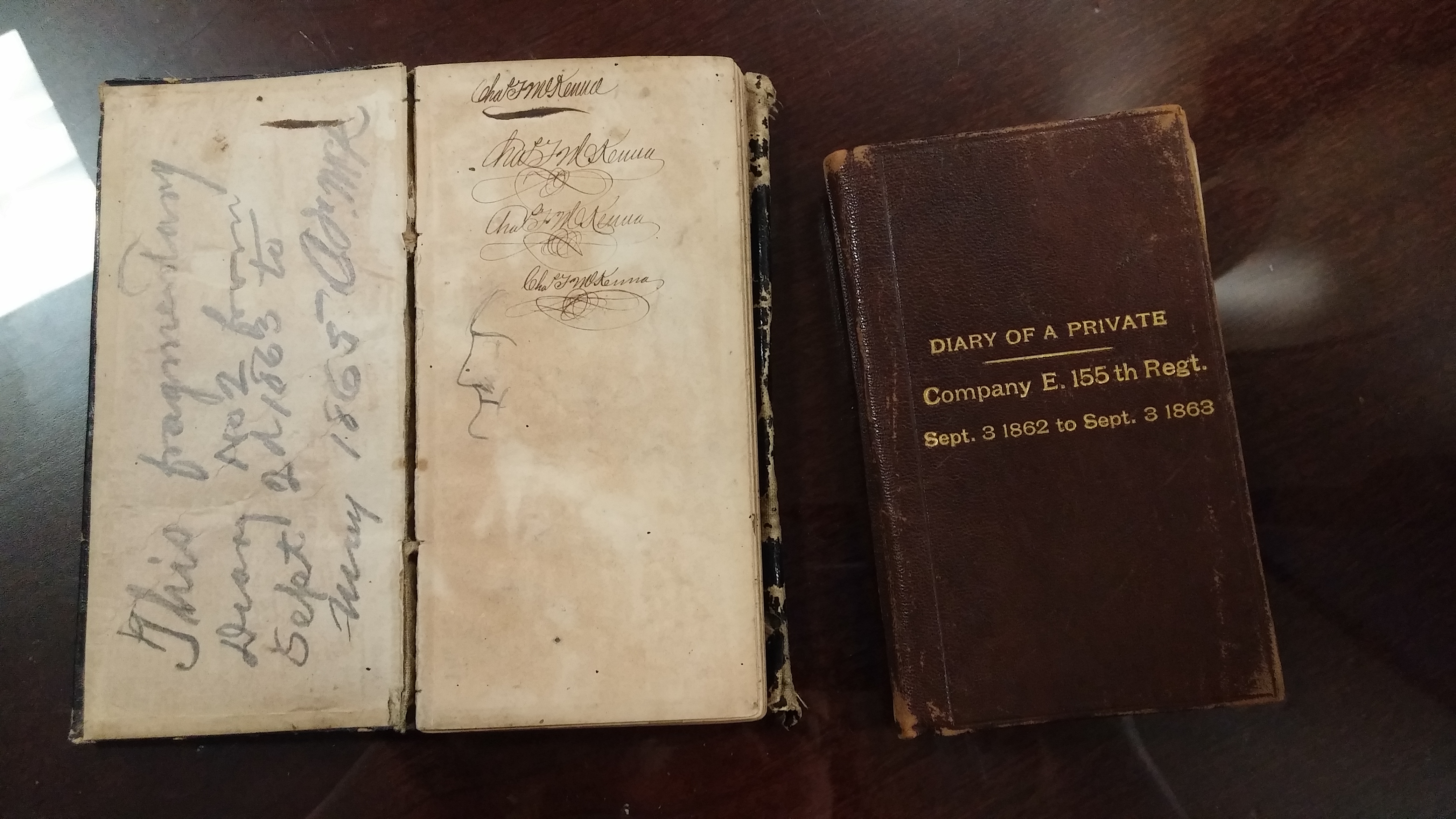
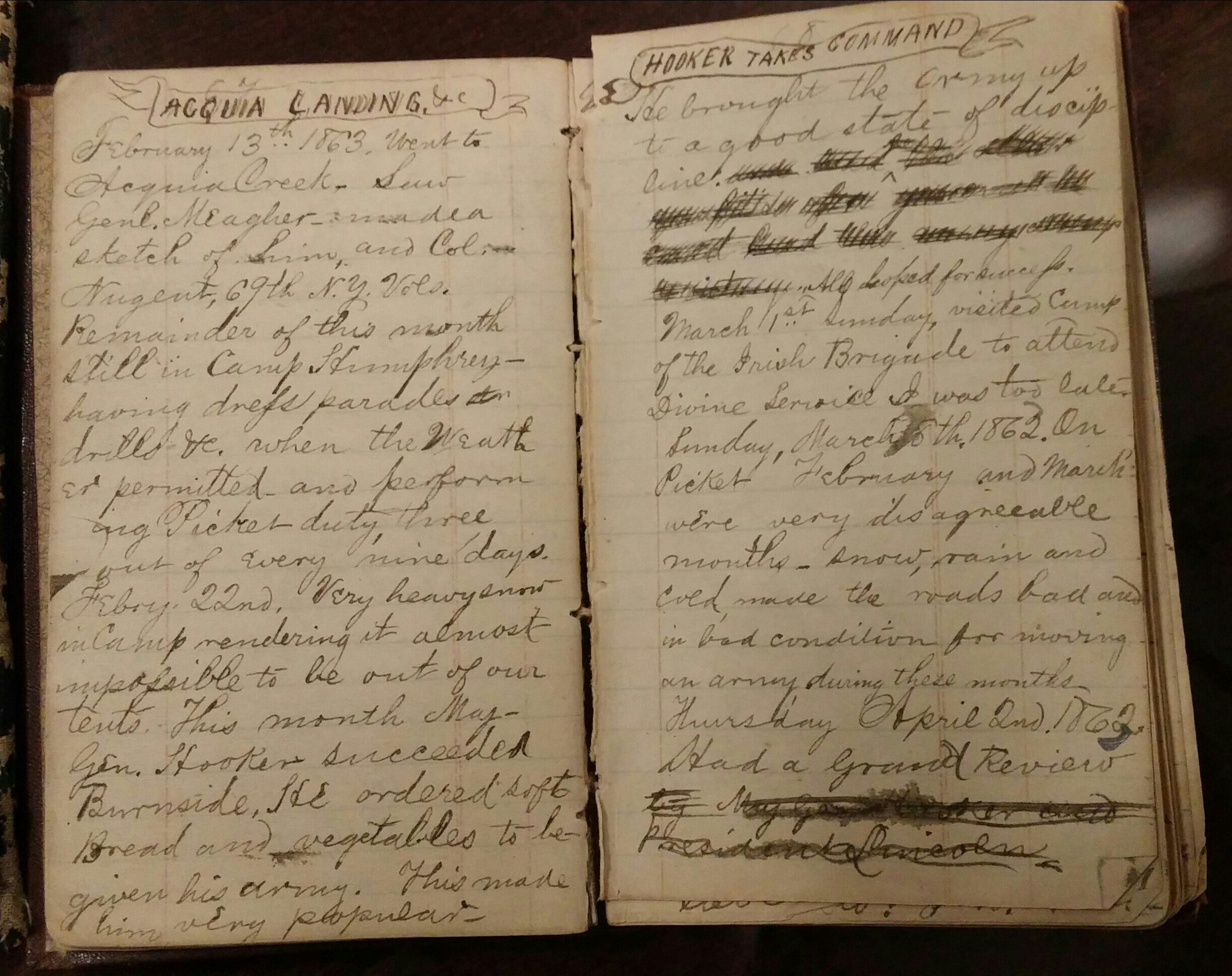
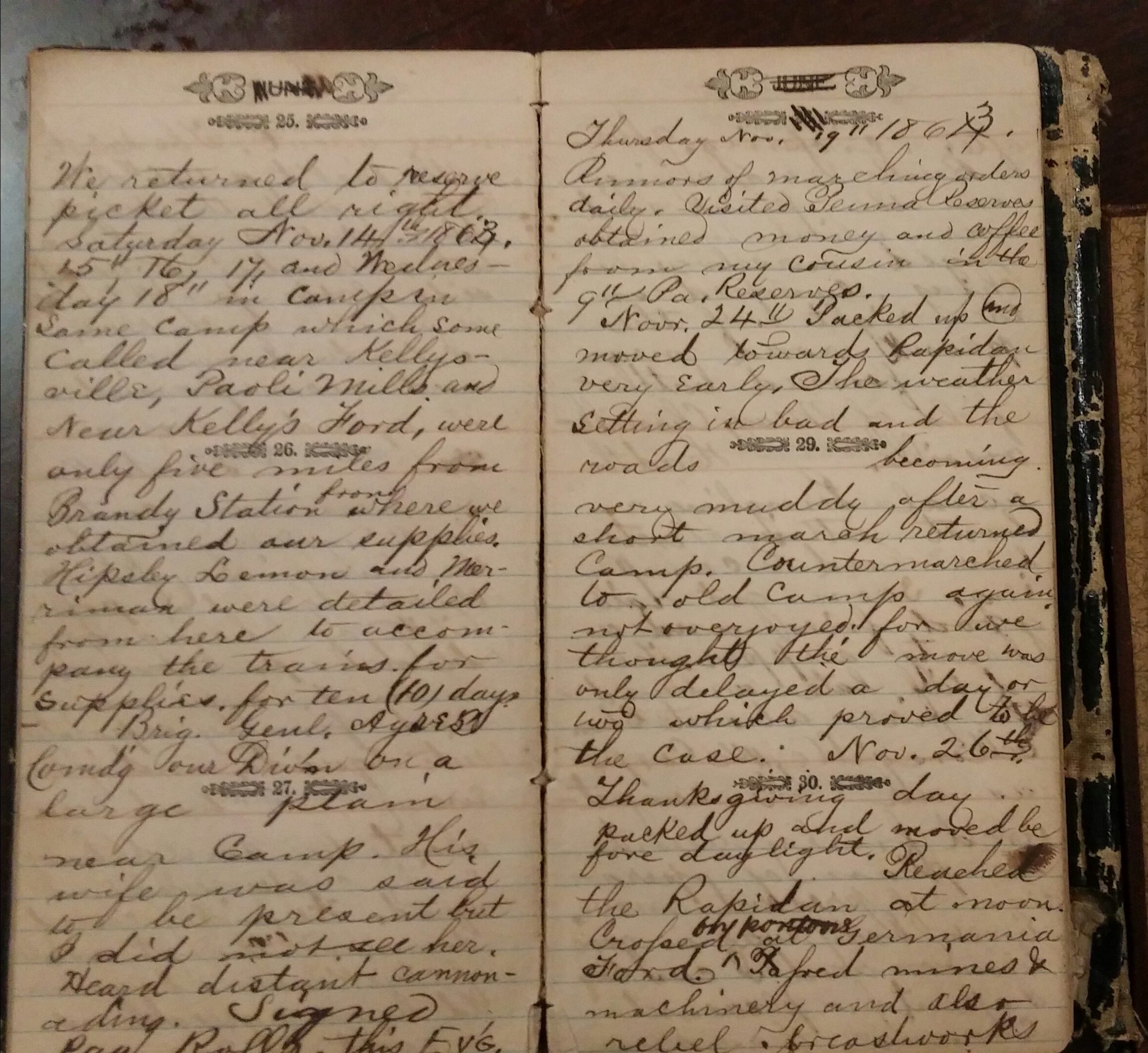
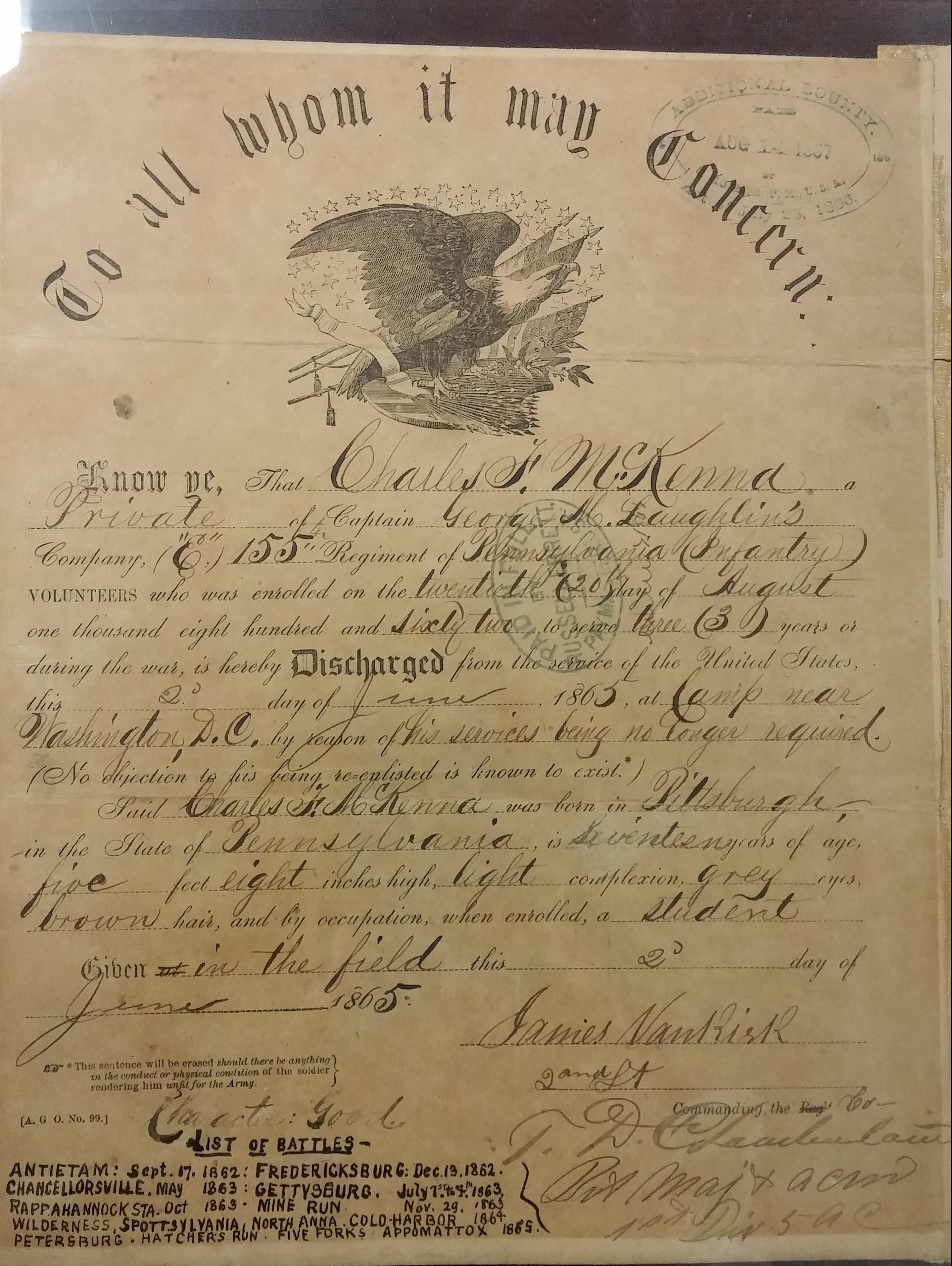
Several times since 2009, I or a colleague have brought out the McKenna collection for one reason or another, but to be honest, I haven’t thought about it since about this time last year, when we had it on display for visiting 6th graders (as we did again this very morning). However, I’m getting ahead. Suffice to say, until recently, I hadn’t though about Charles (as I still think of him 8 years after processing his papers and as if we were friends across historical eras) lately. Before we jump into why he popped up again, a little about him (see the link the finding aid at the bottom of this post for more info–there’s a lot to say on him!)
Charles F. McKenna was born in Pittsburgh, PA, on October 1, 1844.McKenna attended schools in Pittsburgh until, at age 14, he apprenticed to a lithographer, due to his interest in sketching. He would continue to sketch throughout his life, even providing illustrations for a published history of the 155th Regiment, Pennsylvania Volunteers he edited. He didn’t successfully enlist in a regiment until 1862, though he tried previously and was delayed due to family issues. He served the next three years with Company E, 155th Regiment, PennsylvaniaInfantry and saw action in some of the most pivotal Civil War campaigns:Gettysburg, Chancellorsville, Mine Run, Fredericksburg, and Appomattox. After the war, he became a lawyer. By 1904, he was aPennsylvania Supreme Court judge and in 1906, became ajudge forthe United States District Court of Porto Rico [sic].He returned to Pittsburgh in late 1906, unable to adapt to the climate. In addition to practicing law again, this time with his nephews, McKenna began to work extensively with Civil War organizations. First appointed to the Gettysburg Battlefield Commission, he went to to serve as its president for many years.He also created an index of Pennsylvania soldiers who participated in the Battle of Gettysburg for the Pennsylvania Historical Society. In 1911, then-Pennsylvania Governor John K. Tener appointed McKenna to the newly established County Court of Allegheny County. In 1921, he was elected to complete a second ten-year term. His service was cut short by his death on December 3, 1922.
McKenna had a life story that I got caught up in while researching him and, as is often the case, probably spent too much time investigating while processing the collection. But that’s as hazard of the job. Anyway, that mostly brings us to April of 2017…
Last month, while on route to a conference in NJ, My colleagues and I took a detour into Gettysburg (after all, what else can you expect from four archivists left to run wild?) and we briefly drove through a part of the battlefield, stopping at the Pennsylvania State Monument, which you can climb to the top of to look out across part of thebattlefield. We climbed up, walked around, cautiously made our way back now the narrow stairs (meeting with visitors going up on the way), and that was when it hit me, staring at the plaque for a low-number Pennsylvania regiment. Charleshad fought here! I wandered my way around the monument, looking up the finding aid and the note which had his regiment listed (yes, you can get cell service on the battlefield) and when I got to the 155th, there he was!
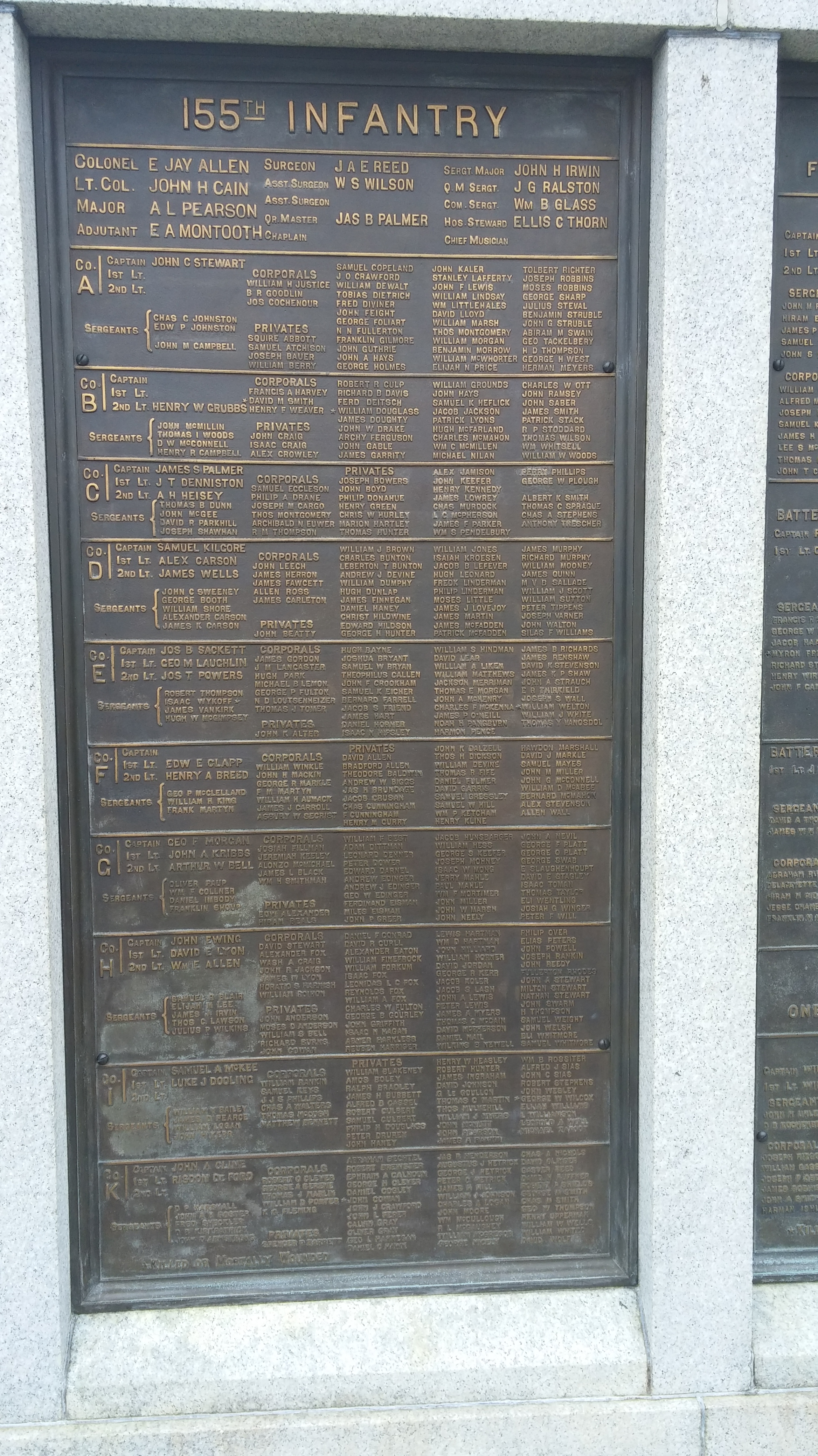
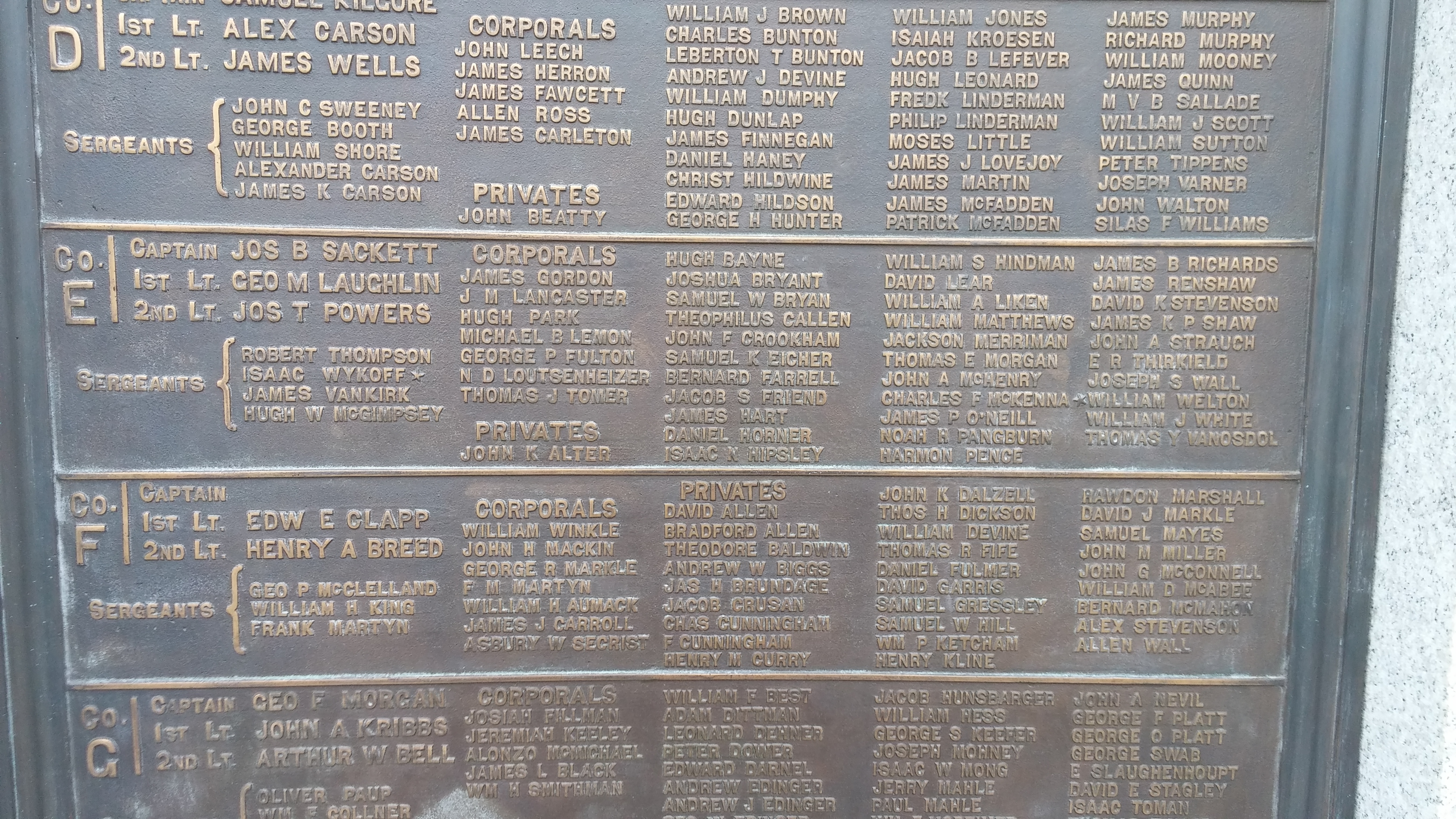
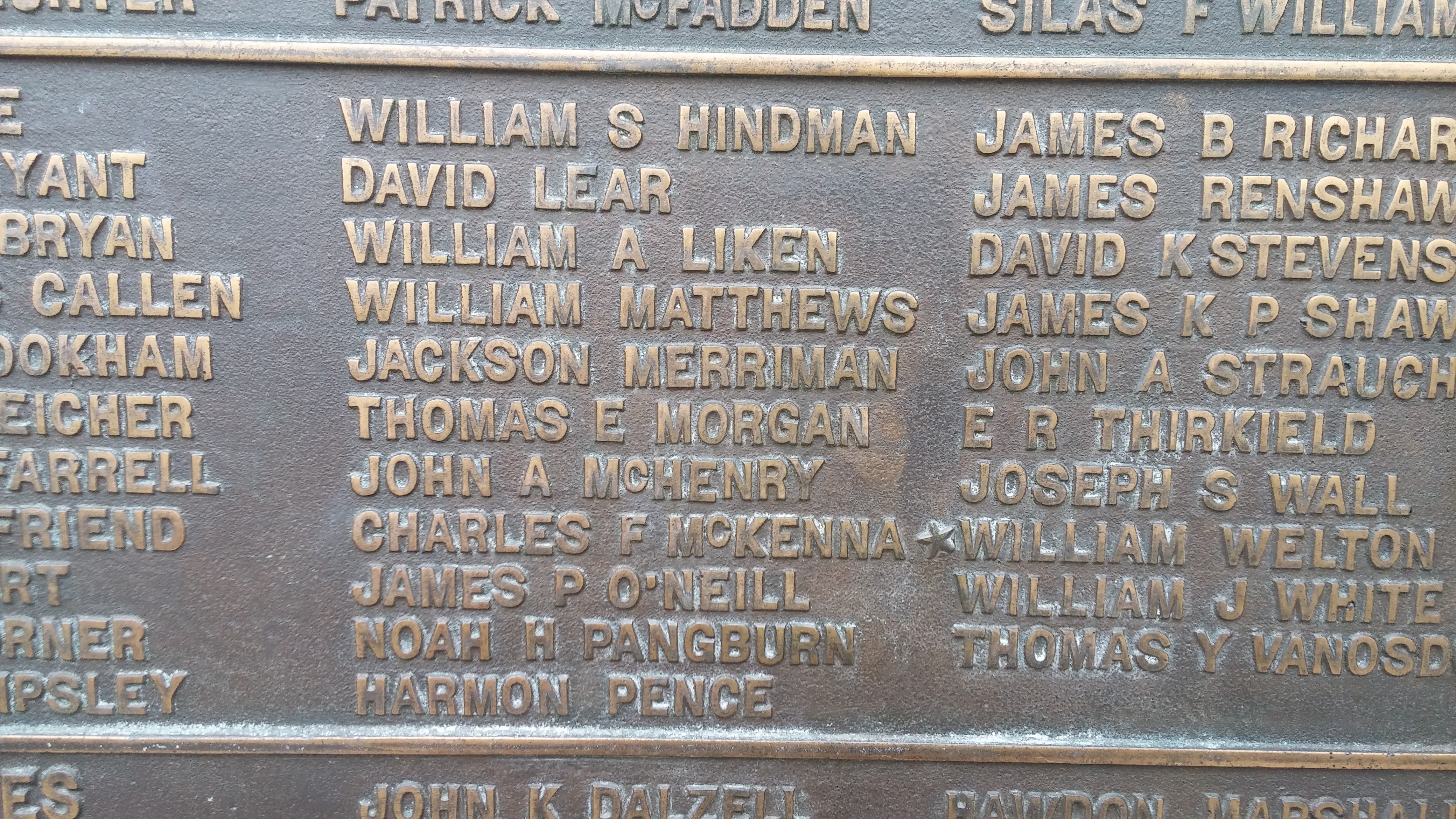
And all the sudden, I had this weird moment. Here was the name of thisman whose papers I had worked on processing, whose life I had dug into, whose history in the war and beyond I knew, staring at me from this monument where it has been for the last 103 years (the monument was completed in 1914–you can read more about it here). And then I started thinking about the connection between this name in metal and the box back on our shelves. McKenna’s diaries are very much written in a style that suggests he expected them to be read and he even went back and worked on them later (if he didn’t entirely write and/or recopy and annotate them later on). As I wrote in the finding aid back in 2009:
Elements within the diaries suggest they may not have been recorded at the time of the war, but instead, written down at a later date. The loss of chronology and the absence of entries for large periods of time in 1864 hint at this. Several notes in the text also imply additions at another date. After the entry for June 23rd, the following appears: “[N.B. Here my notes ceased, as well as my dates and for the remainder of June and July I will be obliged to record the dates as well as facts from memory][C.F. McKenna. Aug. 1863].” In a lengthy entry for November 30th, an asterisk note reads, “Have since learned that it was Genl. Warren made this report to Genl. Meade.” At the very least, it appears additions were made to the diaries over time.
Some years after the war, McKenna would write the definitive history of his regiment, two copies of which we have in our book collection(and also available online). It’s clear that the war, for many reasons, had a powerful effect on him. In turn, that had an effect on me, standing on the Gettysburg battlefield on a cloudy April afternoon. Charleswanted to be remembered and he is, not only on the monument, but through the materials he created, which Special Collections now preserves. I’m extremely proud of the work we do as archivists (everywhere, not just at Virginia Tech), and I had a unique reminder of that day. Charles was a historian by choice (not training) and he and his wfforts remain a piece of historyfor future researchers and scholars. The papers we have here aren’t all there is to Charles F. McKenna in the modern age, either, the monument remindedme. His story is in many places, which is, I think, one of the important takeaways for primary sources–it can often be like a treasure hunt and you have follow the threads where you find them. In this case, that could be to Blacksburg, Gettysburg, or even Puerto Rico.
I’ve probably waxed a bit too philosophical in this particular post, or lingered too long on some boring little details, but there’s a lesson here about archivists, too. We get caught up in the stories of the materials and people we seek to preserve and provide access to every day. And sometimes, in a very unexpected place, we can have a moment where we realize just how meaningful our work can be. Well, at least if you’re me.
The finding aid for the Charles F. McKenna Collection is available onlineif you want read a bit more about what it includes and about Charles. We haven’t digitized it (yet), but you are welcome to pay us and McKenna’s collection a visit. You might just connect to history in a way you didn’t expect.
Closure Announcement: May 18, 2017
Please note: Special Collections will be closed to the public on Thursday, May 18, 2017, while we have some internal staff meetings. We will reopen as usual at 8am on Friday, May 19, 2017. We look forward to seeing you then!
